

The Invincible Armada
"No man will be a sailor who has contrivance enough to get himself into a jail; for being in a ship is being in a jail, with the chance of being drowned."
Samuel Johnson
https://weaponsandwarfare.com/2015/09/
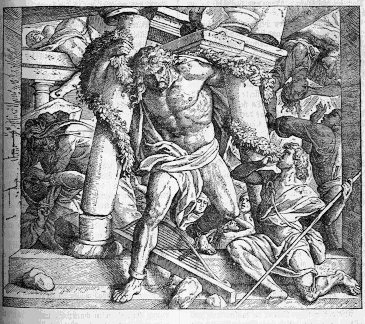 |
|
Invincible
|
 
The Spanish Armada was driven by three primary forces - politics, religion and national wealth.
"The trade of the world is too little for us two, therefore, one must down."
At the time of this confrontation, the two most powerful naval empires of the period could not have been more different. Philip ruled the richest, most educated, most sophisticated, most technically advanced monarchy in Europe. England, by contrast, was regarded as a benighted nation, a bit of a backwater, a rough and callous country inhabited by primitive pirates, who preyed on the property of others, their questionable queen denying their denigrations, while applauding and lauding the loot they lifted during their merciless onslaughts.
Whereas Philip had Titian to paint him, Elizabeth relied on moderately mediocre, local artists, who worked in an old-fashioned style, depicting the monarch masked in make-up, a caricature of the queen she pretended to be. Philip confidently appears as a flesh-and-blood human being, his features recognizable reminders of his power - the jutting jawline a characteristic of his membership of the divinely elected Habsburg dynasty. Most significantly, Philip had an heir, always a kudo for any king, for it augured well for his kingdom. Elizabeth, who some thought was barren, by rejecting Philip II as her consort was likely to remain without an heir. She suffered from two disqualifications for kingship: she was a woman in a world of men and she was a royal bastard, whose claims to fame and to the throne were dubious. Because of their contrasting natures, the two countries were always but a whisper away from war.
Both Philip and Elizabeth shied away from total strife, but conflict occurred whenever and wherever their ships sighted each other's sails. Hassling on the high seas was a commonplace occurrance with Spain losing most of their matches and parting ways with a good deal of the gold and silver destined for the vaults of the Spanish sovereign.
Spanish defeats at the hands of the brutal buchaneers were attributed to exceptional seamanship and superior ship design. Spanish galleons were of the old, high-castled design and were manned mostly by soldiers bent on boarding when flight came to fight.
 
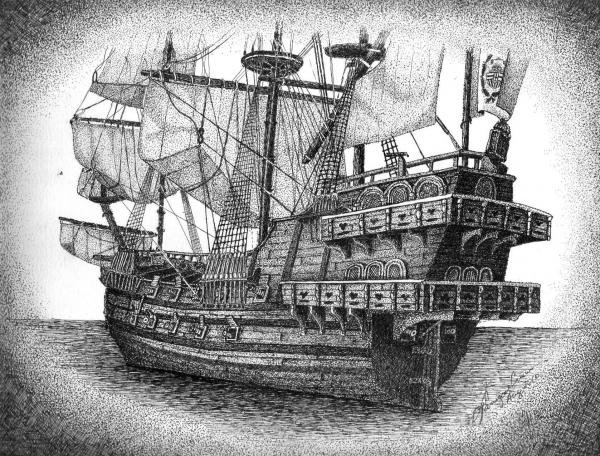 |
|
A Great Galleon |
 
How best to use the ship in combat was a matter of experiment. The manoeuverability of the fleet English ships forestalled Spanish attempts to come along side, grapple, board and battle hand-to-hand. Speed was an important factor, for the bulky boats could neither catch nor outgun the smaller, faster, easier-to-manoeuvre, winged-warriors. The English had the best cannons and so favoured gun duels that targeted the enemy's hulls, although their impact on the Armada lacked the power to inflict serious damage. The Spanish were well aware of the capabilities of cannons, but considered them a prelude to boarding, hence the larger number of soldiers aboard than sailors. In their nimbler vessesl, the English hoped to belay boarding and by holding the weather gage, determine the range at which they fought. Dutch ships were smaller still, but like the Spanish, they favoured boarding as a tactic.
"The worst of the English vessels," a Spanish captain complained bitterly,"without their main course or topsails can beat the best sailors we have."
 
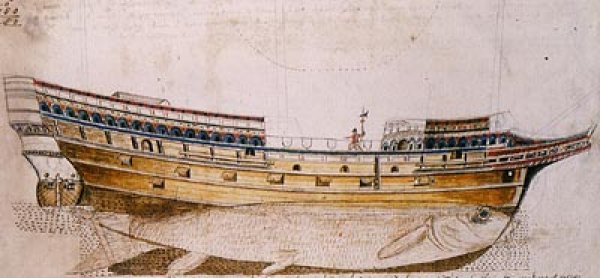 |
|
Ship Design |
 
English vessels owed their vim to Sir John Hawkins and Matthew Baker, two master-shipwrights, who were responsible for building the royal ships. At the time of the Armada, England had only 34 purposely-built fighting ships, but massive changes had 'modernized' the navy using experience gained during buccaneering raids. The galleons' towering castles were cut down and emphasis was placed on sea-worthiness and speed. The re-designed race-built hull favoured by Baker was built lower, longer, leaner and loaded with guns.
 
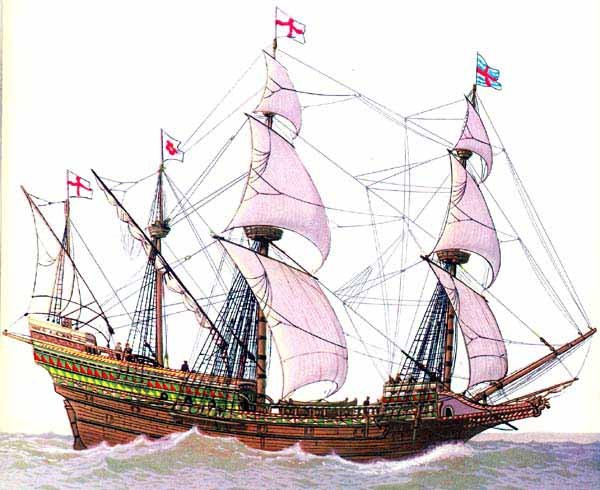 |
|
A Race Ship |
 
The remainder of the English fleet consisted of about 200 commandeered merchant vessels, that were in good condition. Twenty-two had been built or extensively re-built in the previous ten years - some 13 of them under Baker's personal supervision. They performed admirably, generally outmanoeuvring Spanish ships and sustaining remarkably little damage. The key features of successful design were robust construction and manoeuvrability in battle. English shipwrights concentrated on developing features that proved important in confronting the Armada: giving ships a low profile for speed and manoeuvrability and reducing space traditionally reserved on the superstructure for large numbers of soldiers.
Most importantly there were lots of long-range guns. Gunnery played an increasingly critical role in naval warfare, so the size and siting of ordnance became a major consideration. At the battle of Terceira in 1583, the Spanish navy had shown that it was possible to disable and even sink ships by well-directed firepower. The English turned this tactic against the Spaniards, keeping their distance to avoid boarding, while pounding the enemy with their cannon. Traditionally, cannons had been used only for opening salvos, the ships then closing for boarding and battling hand to hand. These smaller, faster, easier-to-handle craft raced rings around "the stately galleons," nipping at their heels and keels and bombarding them with broadsides.
The Armada had only 19 fighting vessels that were as well suited to Atlantic waters as the English ships. Sixteen converted merchantmen and vessels designed for Mediterranean warfare made up the rest of the core squadron. The remainder of the 151 ships were transports, essentially troop-carrying vessels with fighting ships to guard them, not compete in combat.
The Spanish flagship, San Martin, displaced 1000 tons, mounted 48-guns and carried 160 sailors and 300 soldiers. England's flagship, Arc Royal, was an 800-tonner with 30-guns and a crew of 270 sailors and 120 soldiers.
 
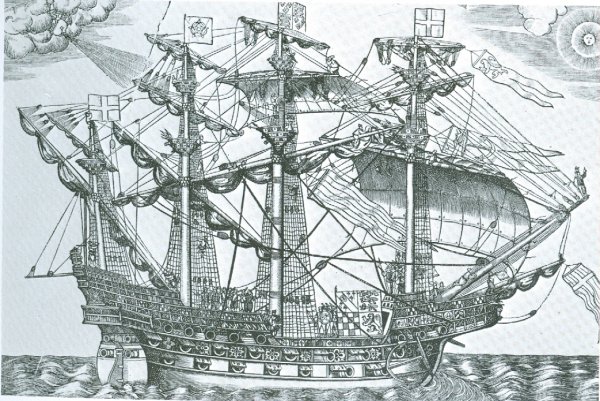 |
|
Arc Royal |
 
Sir Francis Drake, nicknamed El Draque The Dragon, by the Spanish was the man they feared most to fight. This most fearless sea dog and his daring seamanship plagued and plundered almost at will, causing no end of anguish whenever they clashed. With a record on the high seas that was unmatched, this nautical hero was another Nelson, who brought bullion by the boatload to his Queen and was handsomely rewarded in turn by a very satisfied sovereign. Little wonder he became their "most wanted."
Devoted to taking a toll on Philip's treasures, Drake also fought to defend his country from the treachery of Spain. He knew about the vast, shadowy conspiracies of Spain, whose pro-papists were bent on the defeat and destruction of all Protestants devoted to the Queen's cause. As the most detested enemy of Spain, Drake was well aware of the nameless, faceless agents of the Catholic cabal, who lost no opportunity to disparage and slander him to his queen and countrymen. They also attempted to incite his seamen to desert and regularly alerted Spanish towns and ships of his impending pounce.
 
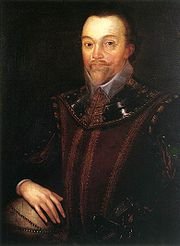 |
|
Sir Francis Drake |
 
In 1580 in his ship, Golden Hind, Drake with a complement of 80 seamen and travelling at a speed of 8 knots, circumnavigated the globe. When the vessel dropped anchor in Plymouth in late 1581, roughly 36,000 miles of ocean had sometimes caressed and often careened against her keel.
 
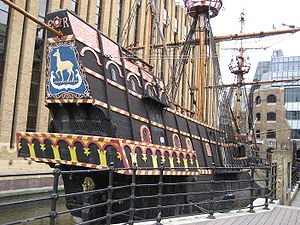 |
|
A 300-ton replica of Golden Hind. |
 
For his fantastic feat, Francis Drake, seadog extraordinaire, was knighted by Queen Elizabeth I aboard his ship, as it lay in the Thames at Deptford, an area on the south bank of the River Thames in south-east London
 
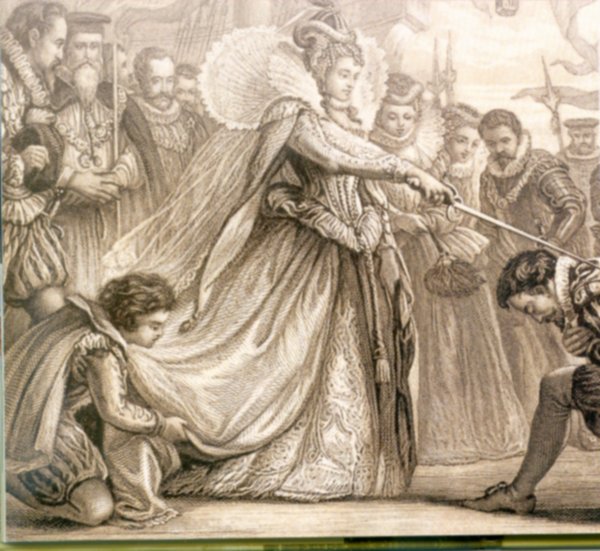 |
|
Drake being knighted 4 April 1581 |
 
 
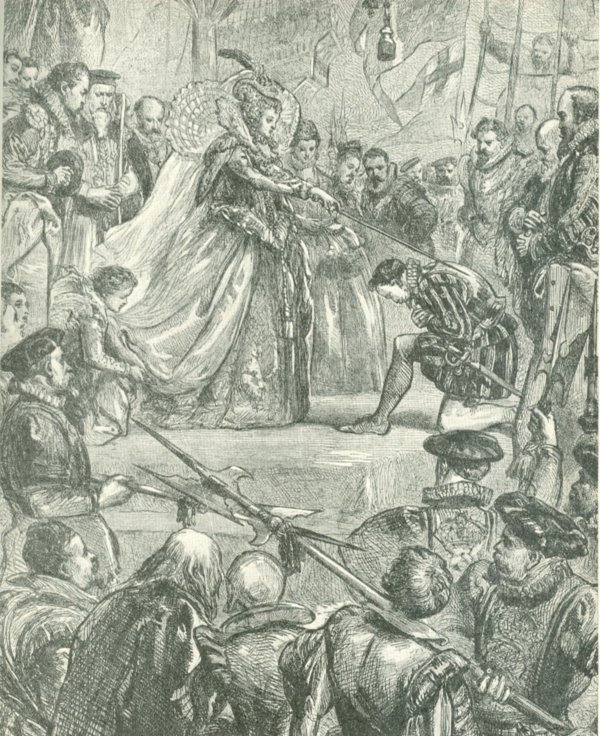 |
|
Knighthood for Elizabeth's Nautical Knave |
 
Sir Francis also had a significant part to play in the historic naval battle that took place 423 years ago in the English Channel, the 300-mile long stretch of water whose width varies from 21 to 100 miles at its widest point.
 
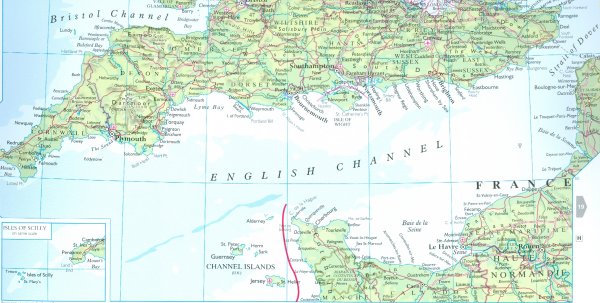 |
|
|
 
 
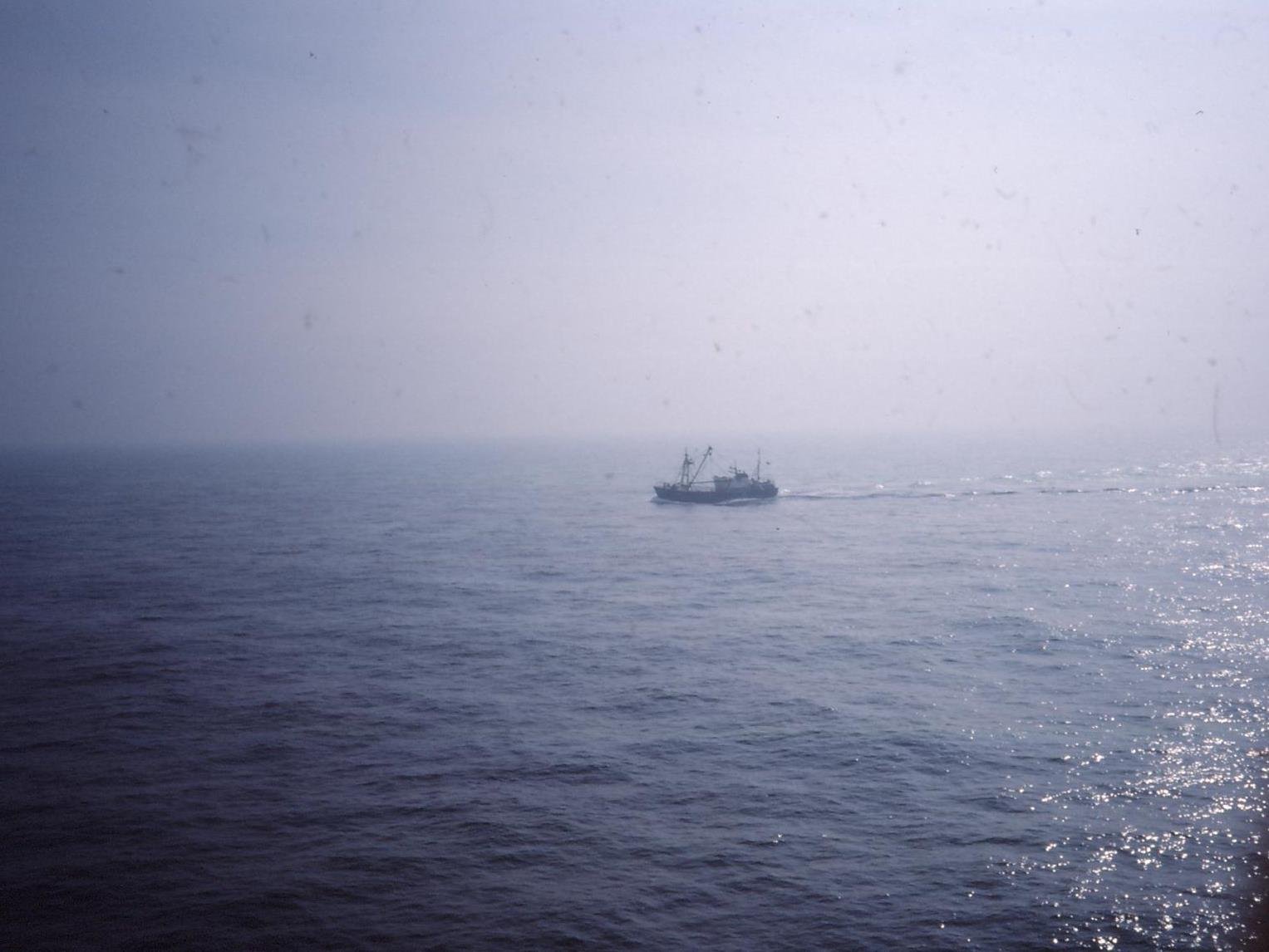 |
|
The English Channel |
 
While insignificant in size compared to neighbouring bodies of water - North Sea, Baltic Sea, Black Sea, Mediterranean Sea - this "Barrier, Bridge and Gateway to the World" has a history haunted by no end of havoc. Its waters contain the tears and echo to the cheers of folk who fought to keep their island home the happy haven.
Rex sees the flattery of Elizabeth‚Äôs courtiers as perpetuated too often by modern historians. He argues that she showed a sustained aversion to matrimony, coldly entering into marriage negotiations to enhance her prominence on the European stage. She is repeatedly castigated for making no provision for the succession, thereby ignoring her financial support for James VI after 1586 and their personal correspondence. Rex denounces her as crueller than her half-sister Mary (who burned more than 300 Protestants), since after the northern rebellion of 1569‚Äď70, some 450 men were executed, and from the 1580s, Catholic priests caught entering England clandestinely were hanged, drawn and quartered. He rejects the vital Tudor distinction between religious nonconformity, and rebellion or active sedition, since ‚Äúthe victims were just as dead‚ÄĚ. Readers may disagree but should enjoy this astringent assessment.
Major mayhem there once resulted from menace to a monarch. Despite her imprisonment in the Tower, Mary Queen of Scots was a real rival queen to Elizabeth and Philip of Spain regularly used papist aliens in England to conspire to free Mary to take over the throne. As long as Mary was alive, she represented a very real risk to the reign of Elizabeth, a risk the Queen was soon to be rid of.
 
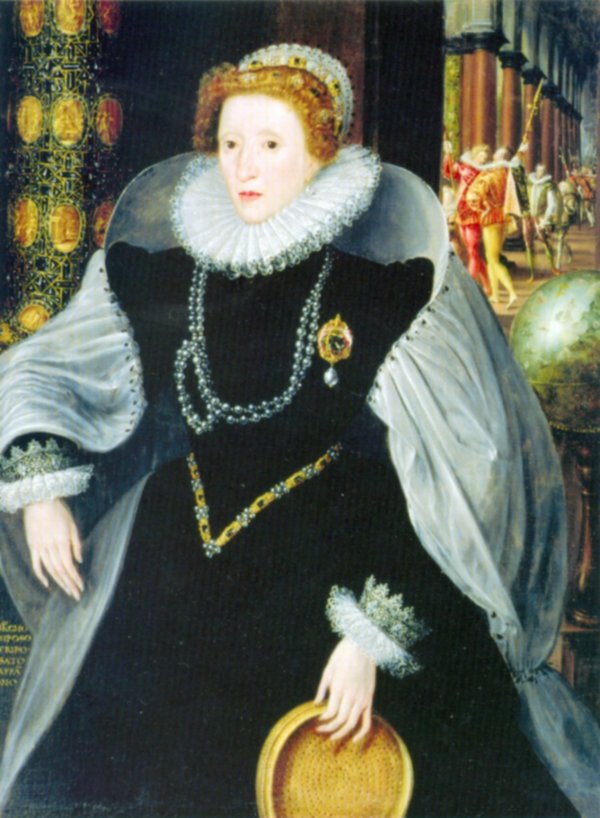 |
|
Queen Elizabeth I |
 
Wavering when any decision had to be made, Elizabeth issued the order for Mary's beheading, but was reluctant to sign it. Having finally affixed her signature, she prevaricated about the process, repeatedly halting the beheading. Only after William Cecil, Lord Burghley and her other frustrated Privy Councillors warned her that Mary's supporters' plenteous plots had become a serious source of concern, did the Queen accept the fact that Mary's head had to fall.
.
 
 |
|
Elizabeth's First Minister Lord Burghley. |
 
 
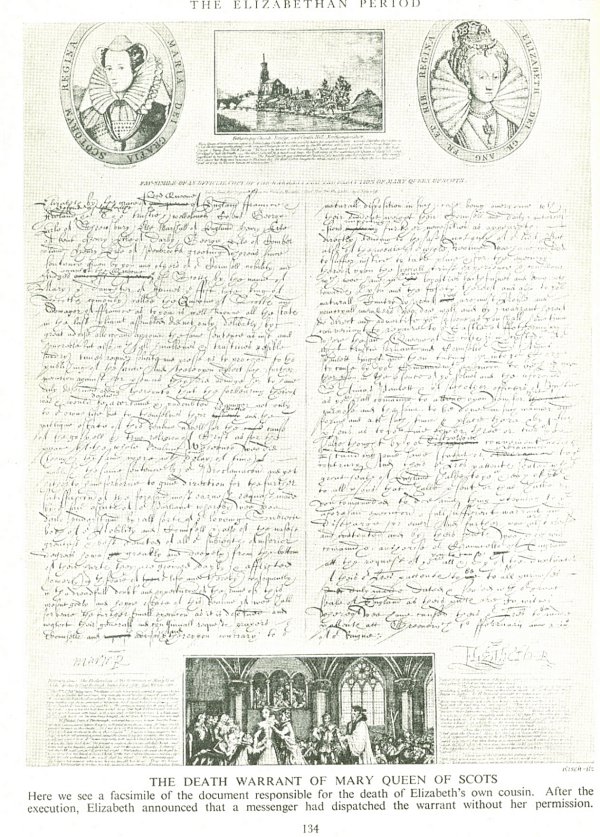 |
|
The execution order signed by the Sovereign. |
 
 
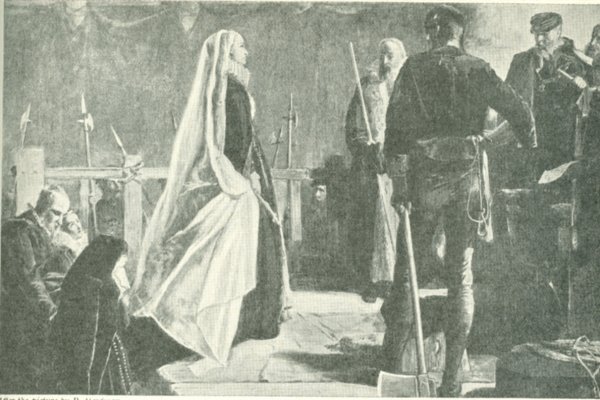 |
|
At Fotheringay Castle in 1587, Mary Queen of Scots fearlessly faced her awful fate. |
 
 
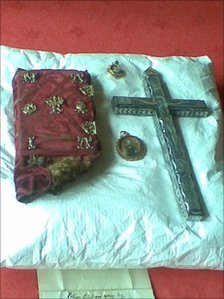 |
|
Mary's Prayer Book which she carried to her execution. [*] |
 
Dressed in scarlet, the colour of martyrdom, Mary placed her head on the block and repeated three times the prayer, "Into your hands, O Lord." The first blow nicked a nasty gash on the side of her skull; two more took their toll.
Bellowing to the captivated crowd, "Death to all Queen Elizabeth's enemies, the executioner grabbed a handful of hair to hold her head aloft. Instead, he waved a wig and Mary's bald head fell to the floor, Suddenly her body moved and from the folds of her gown, a Skye terrier emerged, jumped down and looked about. Mary had carried her canine to her beheading.
All the while this horror was happening, Elizabeth huddled alone in her room, sobbing sorrowfully, but not for Mary's demise. Her tears were fostered more by fears she felt at the decapitation of a queen, for precedents like that became principles. When the deed was done, Elizabeth denied authorizing it and ranted and raged at those who had carried out her orders. She was bent of imagining she had played no part in the killing of a queen.
Philip and Elizabeth were bitterly entangled through marriage. Prior to Elizabeth's enthronement, Philip II of Spain and Mary Tudor, Elizabeth's predecessor and half-sister, had reigned in England as "Philip and Mary, by the Grace of God King and Queen of England and Spain." Philip now began to believe that he had every right to pursue his inheritance to the throne of England.
 
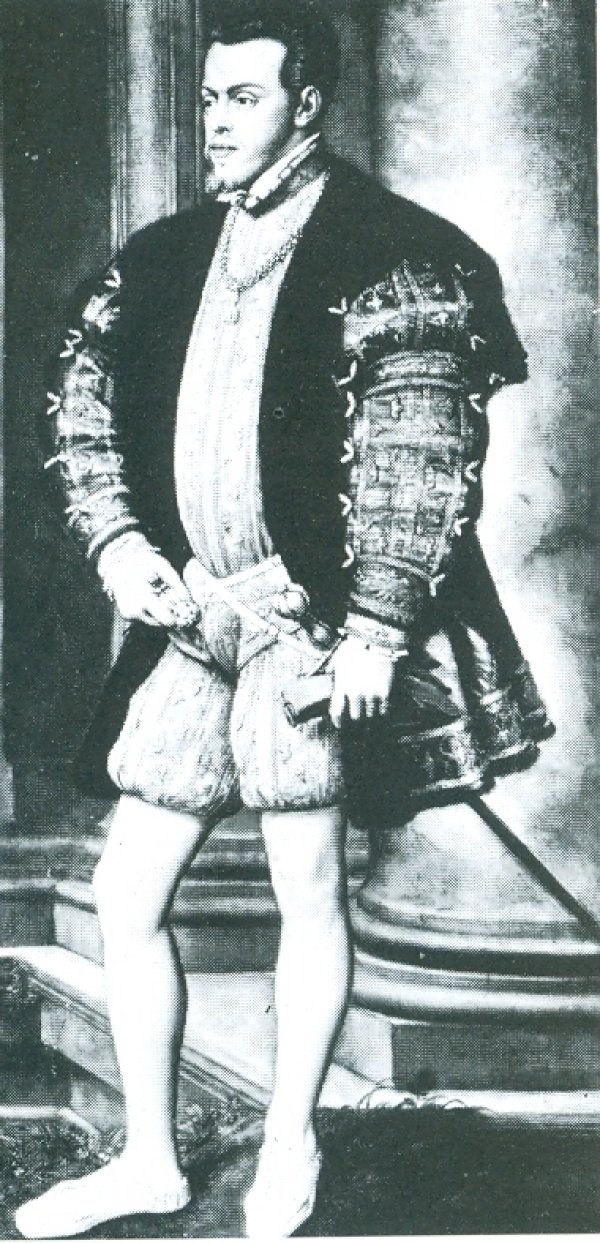 |
|
Philip II |
 
 
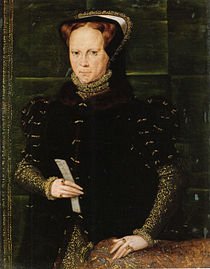 |
|
Mary I (Tudor) |
 
In this painting of her, Mary Tudor's facial features display a mite of meanness and to those who felt the flames of her fury, it was well deserved. There is no doubt about the fact, that Mary's infamy scintillated throughout the centuries, causing the cauterizion of a great many people who practised the Protestant faith. Mary's successor, Elizabeth I, stirred the embers and fanned the flames even higher, torching in her longer term twice as many folk whose faith she felt was wrong.
 
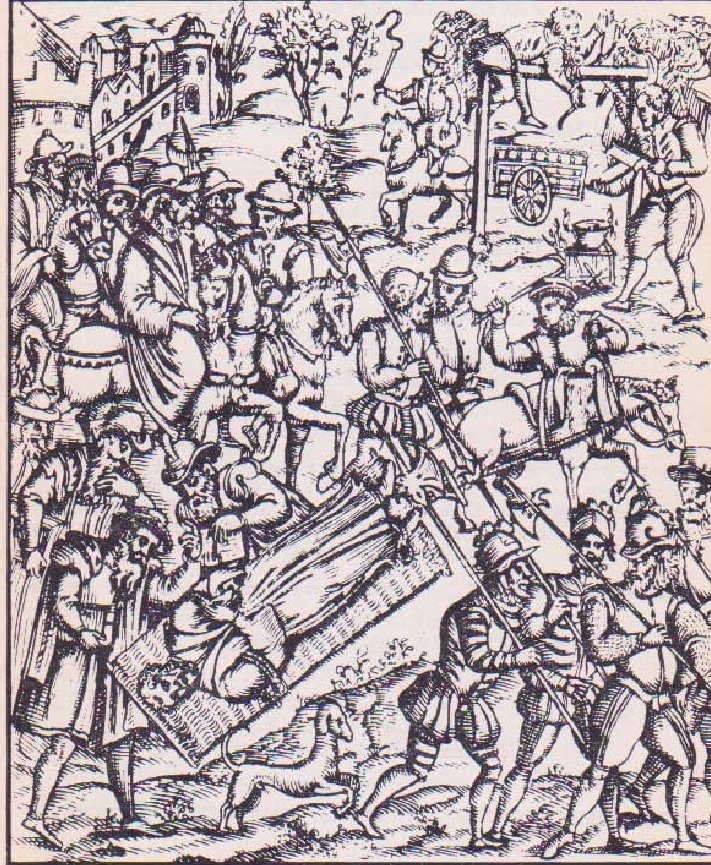 |
|
Another searing to celebrate |
 
Our concept of the Sceptred Isle back then may be that it was a peaceful, pleasant place, where poetry, prose and applause aplenty rang out for William Shakespeare, whose plays pleased so many. But Will knew well enough to keep his own head down, for it was a dangerous period, when primitive practices took a heavy toll on innocent folk whose sole sin was simply to worship as they wished in both public and private places.
Like Elizabeth, Philip was a procrastinator, who repeatedly justified delaying the attack on his old enemy with his trusted truism."In so great an enterprise, it is fitting to move with feet of lead."
However, one could only stand so much. The Spanish sovereign was driven to distraction by Elizabeth's sea-dogs, especially Drake, whose ravaging raids got gold aplenty from Spanish galleons and from its Caribbean colonies. Since her assension, Elizabeth's increasing persecution of Papists made her name noxious in all Catholic kingdoms and Philip felt by overthrowing his sister-in-law, he would become a crusader whose mission of mercy would be blessed by all Catholic folk and most certainly the Pope. These infuriating factors alone were sufficient cause for war, but the execution of Mary Stuart made it a certainty. On hearing of her beheading, an enraged Spanish king decided the time had come to conquer a country and kill its queen.
This is an example of history which shows that the pressure of events is sometimes more powerful than the wills of men and women, since neither Philip nor Elizabeth initially wanted war. It also demonstrates that once war starts, it is impossible to say when or where it will end.
So was launched the Impresa d'Inglaterra, 'Enterprise of England', a conglomeration of galleons known to history as the Spanish Armada
 
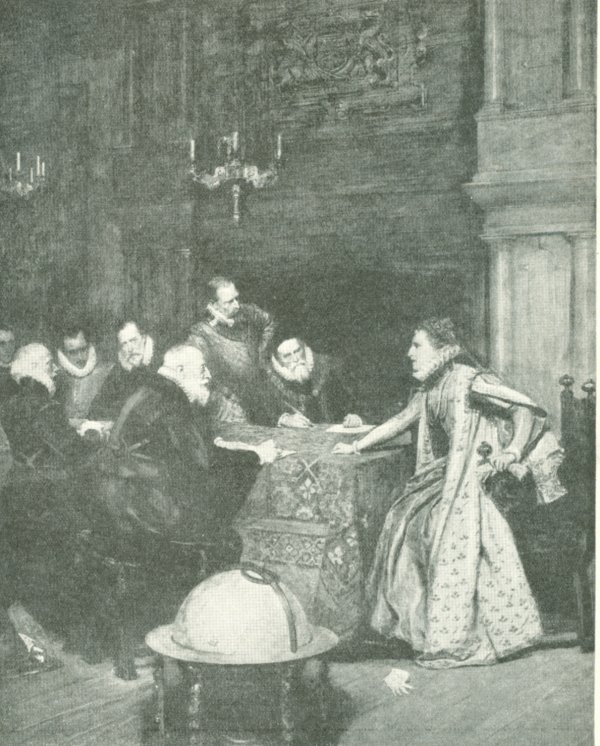 |
|
Elizabeth learns of the Armada's might. |
 
The Marquis of Santa Cruz, Captain General for the Open Seas, was Spain's answer to Britain's Admiral Horatio Nelson. The Marquis, a masterful mariner, was the designated commander by sea for the invasion of England. While he was anxious to be off, he frequently had to warn Philip that this war required copious supplies and careful preparation to make the Armada fit to face and defeat its English adversaries. Equipping and supplying the Armada's many needs was made more difficult by the sea dogs' frequent disrupting raids on Spanish ports. The Marquis's cautions served only to madden the monarch. This very same sovereign, who continually counselled moving with leaden feet, was now in a panic to proceed. His new byword was,
"Success depends mostly on speed. Be Quick! Speed and secrecy will supply the place of greater strength. Though the season is a dangerous one, God, whose cause is ours, will give favourable winds."
Spaniards claim the Armada's mission - which many believe could very well have challenged the great Horatio - would have turned out quite differently had the Marquis actually commanded the Spanish fleet. It was not to be, however, for the masterful Marquis' personal vessel sailed into the unknown on 9 February 1588, the date of his untimely death.
Having lost Spain's supreme sailor, Philip chose the Duke of Medina Sidonia to command the Armada. While a man of proud lineage and great wealth, this grandee had more pedigree than proficiency in naval knowledge. By his own account, he "did not understand it and knew nothing about it." The king gave the command to Sidonia, because he was very religious, led a fine life and had good habits, all characteristics Philip believed would help assure God's support for the success of the Armada. All on board the Spanish vessels were to confess their sins and resolve absolution before sailing. No swearing or women were permitted on the ships. In addition to lacking nautical knowledge, Sidonia begged to be relieved of the responsibilty, citing his seasickness. He abhored the thoughts of riding the waves and begged off the big bout. No matter, said his sovereign, you're it.
Philip declared he did not really want to conquer England, simply to subdue it and place a good Catholic on the throne. Religion was the main motivator as his notes indicated,
"The cause of religion takes priority over everything."
Ready or not Sidonia sailed. Portugal, which had been captured by Philip, provided valuable ships and a new and powerful Tuscan galleon was pressed into service. The fleet comprised: ten first line Portuguese galleons, fourteen Spanish, one Tuscan and 14 galleasses - half galleon and half galley. Behind came forty ships of the second line, large, armed merchantmen, 34 lighter vessels to carry messages from ship to ship, 23 freighters and four galleys, oar-driven fighting ships easily swamped by the waves.
Finally, the ships were manned, equipped and victualled and the order was given to go. The king's command was brief and brutal. "Advance up the Channel, pushing aside any English vessels blocking the way."
 
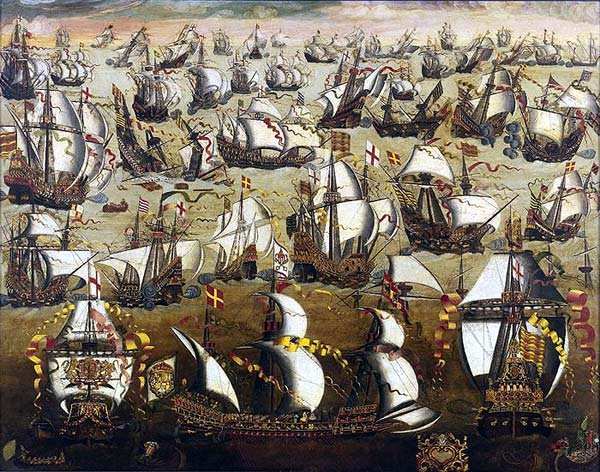 |
|
The Invincible Armada |
 
 
 
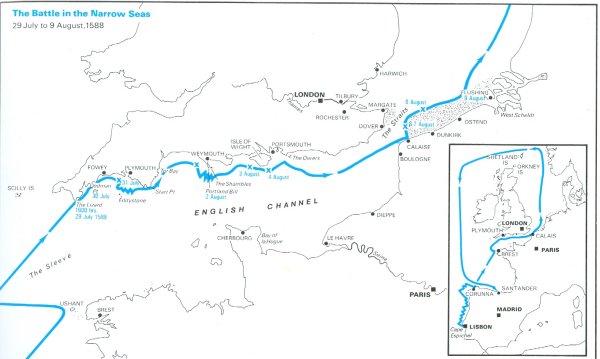 |
|
Routes of the Armada |
 
Elizabeth feared the Spanish might somehow slip past her ships in the Channel and join with Alessandro Farnese, the Duke of Parma's forces at the Spanish Low Countries - today's Belgium - and assault the shores of Kent. From Antwerp, the leading port of the North Sea, Parma hoped to launch an assault on England, whose hated queen supported the Dutch Protestant rebels in the north and was fast becoming the chief supporter of Protestantism and anti-Spanish feeling in northwestern Europe. The Prince of Parma, a diplomat and soldier, rallied the Catholics in the southernmost provinces of the Netherlands and allied himself with Philip II for support.
Elizabeth dearly wanted to rid her reign of fear of Philip and his perverse plots. The latest, the Babington Plot, proved to be the final straw. All Catholics were deemed dangerous by the Act of Persuasions passed in 1581 and it became high treason to reconcile or to be reconciled to the Catholic faith. Philip's continuing plots to replace her with Mary Tudor were reasons enough to want rid Spain of its monarch, but the looming prospect of the loss of her land really roused her to a rage and she committed all of her country's resources for war.
Plenty of plans were proposed for defeating the Armada and their multiplicity resulted in frequent disagreements about the tactics to take and the person to lead the charge. The Queen was nervous about committing her whole fleet as far west as Plymouth. Her Privy Councillors favoured the fleet being divided into squadrons assigned to various locations along the coast. Howard and Drake strongly opposed any fancy of fracturing the fleet and they finally won out. The Queen designated Lord Howard of Effingham Lord High Admiral and Drake, his second-in-command, a subordinate role he accepted with ill grace.
 
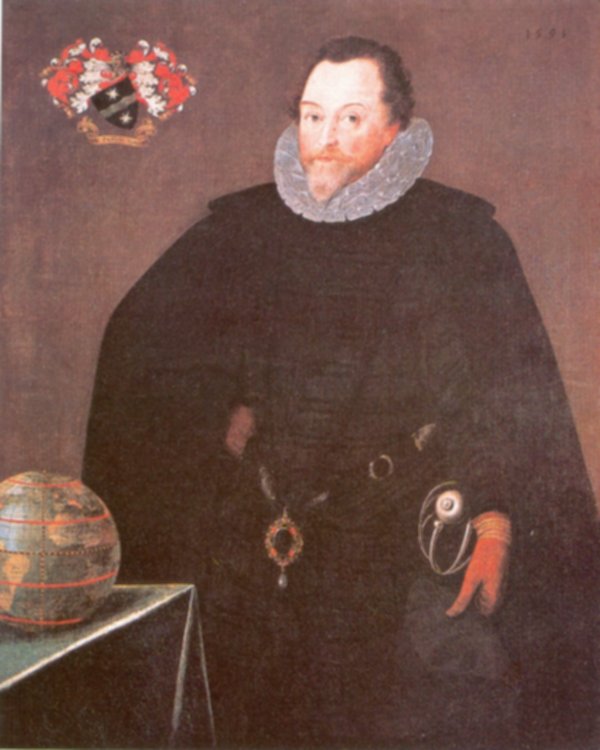 |
|
Lord Howard of Effingham, Lord High Admiral of England |
 
In 1587, the year before the Armada, Drake had carried out a preemptive strike against the Spanish. He boldly entered Cadiz, brushed off defending galleys and wreaked havoc in the harbour. He sailed away the next day bragging that he had, "singed the king of Spain's beard." While doing little damage to Spanish vessels, Drake did destroy thousands of barrel staves that were badly needed for the Armada's food and water. Even Philip was impressed with Drake's audacity, commenting, "The loss was not very great, but the daring attempt was very great indeed."
In 1588, it was decided not to await the arrival of the Armada, but to implement Drake's plan to take the offensive and attack a Spanish port. It was hoped this would force Philip's fleet to emerge to defend the coastline. Drake assembled his ships at Plymouth. Elizabeth now saw the sense of a forceful, concerted attack and allowed all her vessels to participate. Howard's fleet then joined Drake's and together they prepared to depart Plymouth Sound bound for Spain. Nature said no, however, for shortly after they had entered the Channel, a southerly gale forced the fleet back into the Sound.
 
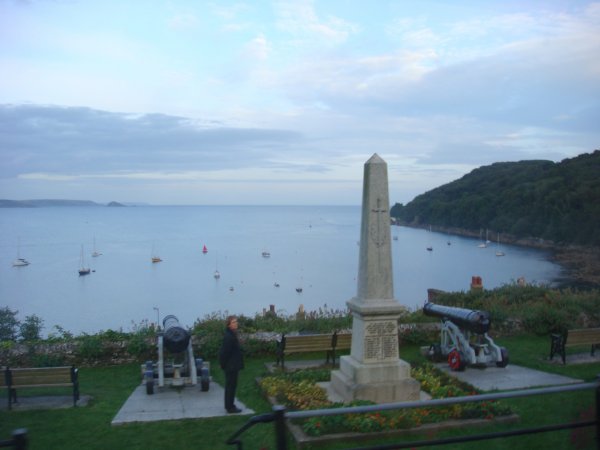 |
|
Plymouth's safe haven Sound |
 
 
 
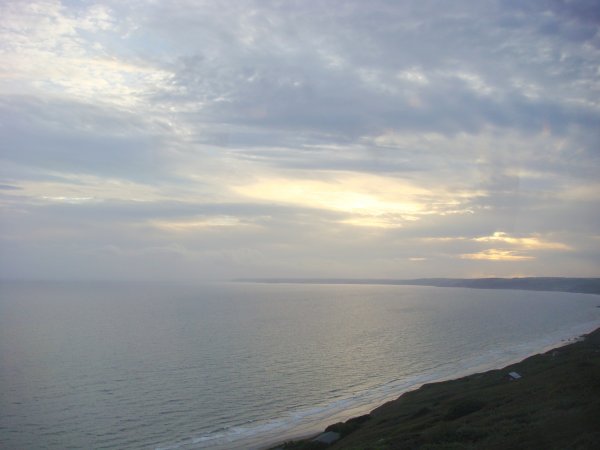 |
|
View from Whitsand once white with warship sails. |
 
Philip, left nothing to chance, endeavouring to ensure God's approval of his Armada by having the Pope, Sixtus V, bless the fleet. It was he who christened it, The Invincible Armada. Indulgences aplenty were granted by Sixtus to encouage Catholics to suppport the venture. Caught up himself in the emotional call to arms, Sixtus promised funding for the fight, but when the Spanish lost, his loyalty languished and he refused to pay up.
To help restore Catholicism to the unsaved on the Sceptred Isle, hundreds of monks mingled in the Armada with the Spanish soldiers and sailors, these frocked folk all under the vicor general of the Inquisition. His presence augured ill for any who had succumbed to the evil will of that "usurping, heretic, prostitute Queen." Before the fleet departed, Philip ordered enough masses said to guarantee that the "winds of God" would succor the Spanish. The winds, in fact, favoured Elizabeth. The Pope's bull against Elizabeth was meant to motivate Catholics in England to climb aboard. Embark they did, but on the wrong vessels.
Sidonia was ordered to join forces with his ally, Parma, located in present-day Belgium. Their combined combatants totalling some 38,000 troops were to attack across the narrow part of the Channel from where one could see the White Cliffs.
 
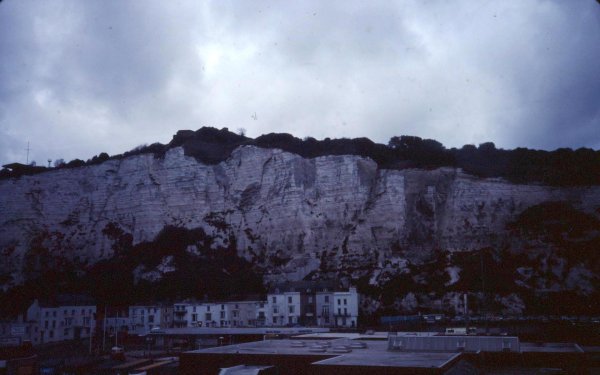 |
|
Cliffs of Dover |
 
 
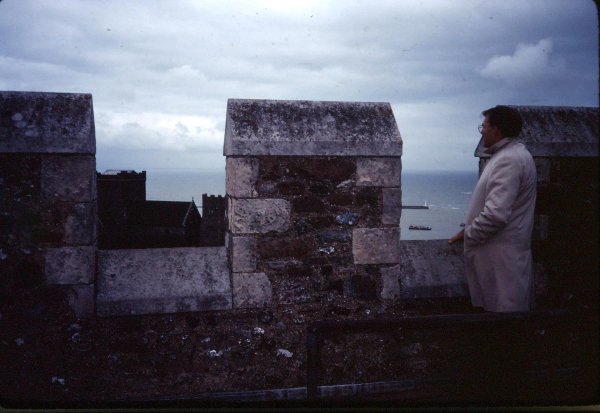 |
|
View of the Channel from the Keep of Dover Castle, where courage answered the call on so many occasions. |
 
 
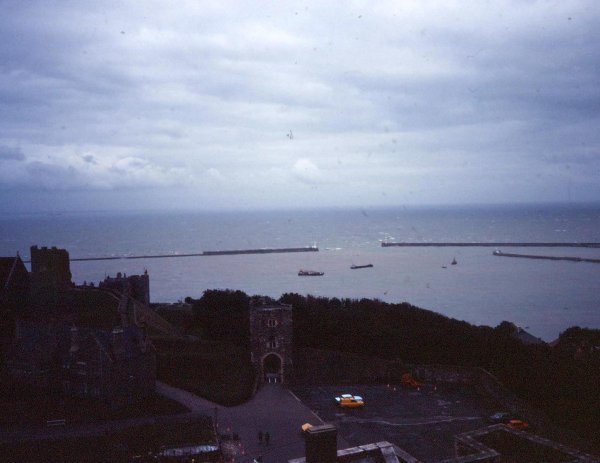 |
|
Entrance to Dover from the Channel |
 
This was not the first time a continental despot had dared to darken the shores of the tiny isles nestling nearby. Englishmen had regularly faced serious sieges over the years and this heroic defence of their island home, served to embolden subsequent sailors to repeatedly repulse invaders.
With hordes hovering and about to strike, the time had come to rouse England, to set aside every hindrance and to foster the fighting spirit of the people behind their queen. Giving the most famous speech of her reign, Elizabeth set the tone and tension for her nation by the eloquent appeal she made to men assembled at Tilbury.
 
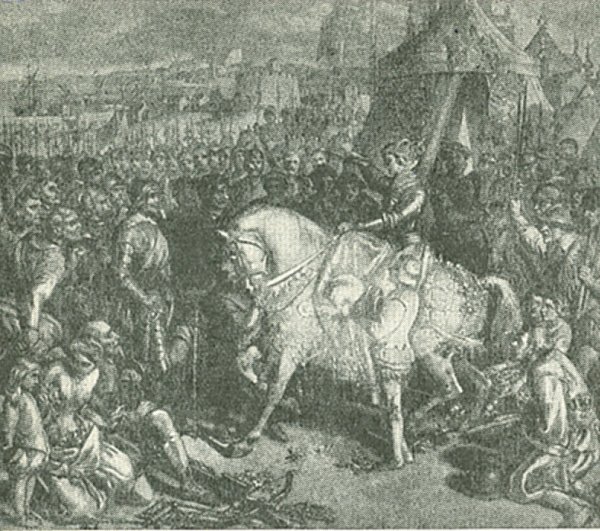 |
|
Elizabeth's passionate appeal at Tilbury. |
 
"I have placed my chiefist strength and safeguard in the loyal hearts and good-will of my subjects; and therefore I am come amongst you, as you see, at this time, not for my recreation and disport, but being resolved, in the midst and heat of the battle, to live and die amongst you all; to lay down for my God, and for my kingdom, and my people, my honour and my blood even, in the dust. I know I have the body but of a weak and feeble woman; but I have the heart and stomach of a king, and of a king of England too, and think foul scorn that Parma or Spain, or any prince of Europe, should dare to invade the borders of my realm; to which rather than any dishonour shall grow by me, I myself will take up arms, I myself will be your general, judge and rewarder of every one of your virtues in the field."
Her impassioned appeal and the majesty of their monarch fired their feelings and the troops cheered her long and lustily. In the words of Winston Churchill,
"As a body their loyalty to the Crown was unshaken."
As it turned out, their bond, but not their blood was needed, for Dover's shores were never daunted by Parma's forces.
On 28 May 1588, a sea of white sails opened before the wind and the great fleet sallied forth from the Tagus River and port of Lisbon on the Enterprise of England. The usurper and her Protestant people would be taught a lesson they would never forget.
 
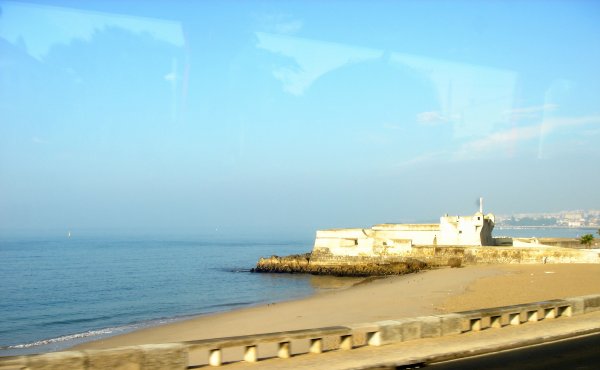 |
|
Tagus River fort |
 
 
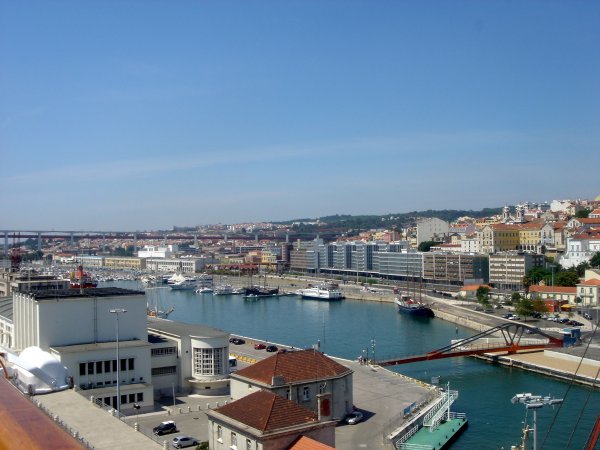 |
|
Port of Lisbon |
 
 
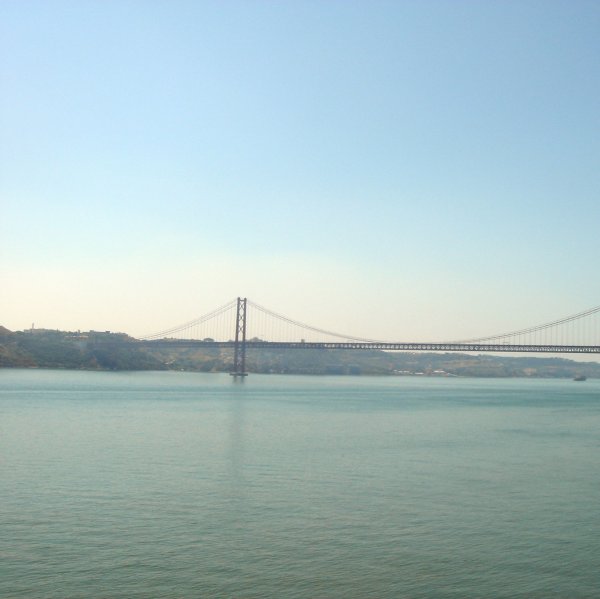 |
|
Into the High seas from Lisbon Harbour |
 
The flotilla of ten squadrons totalling one hundred and thirty sail, 8050 sailors, two thousand oarsmen and seven regiments numbering 19,000 soldiers tacked slowly northwards along the Portuguese and Spanish coasts. Their ally, Duke of Parma, awaited their arrival up the Channel at Antwerp with an additional 26,000 seasoned soldiers of the Regiments of Flanders.
 
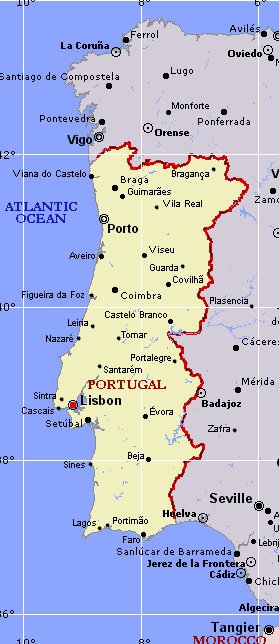 |
|
Coasts of Portugal and Spain |
 
 
The majestic fleet made its way slowly along the coastline, already fighting winds that favoured Elizabeth. An Atlantic storm unlike any in living memory, savaged the ships in the latitude of Cape Finesterre, scattering some, ravaging the rest and putting plans for the assault on hold. Licking their wind-borne wounds, the ships sought refuge and refit at La Coruna on the northwest tip of Spain. There the victimized vessels were assailed anew by waves and winds that tore the sails and terrified the crew. In addition to wind woes, the battered fleet suffered from leaky vessels and spoiled food due to storage problems. Life aboard the vessels was hard. Victuals were measly and mediocre and beer, wine and water were often sour and undrinkable. Disease was a common threat, the crew was regularly stricken with dysentery - the cruel typhus. The fevers were shared by fears about what next would nix their navy.
Frantic and floundering, Sidonia sought sympathy and additional support from Philip, who said simply, Sail on. The Duke, an administrator with no sea or operational experience, was ultimately charged with a large share of the Armada's failure. His leadership, however, following the first disastrous storms, saved the flailing flotilla and got it safely to Corunna.
 
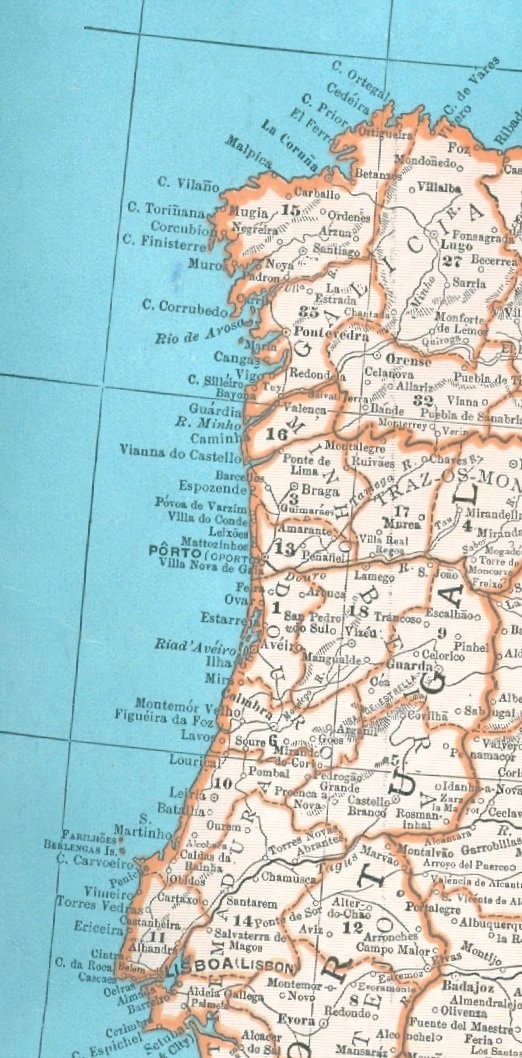 |
|
Corunna |
 
A far larger share of the fault must be Philip's, because of his undue haste and inadequate planning for such a hugely ambitious undertaking. In fairness, however, it would be difficult even today with all the electronic communication equipment available, to coordinate successfully such a vast number of vessels on a 1000-mile venture.
It took two months to repair and regroup at Corunna before the Armada could set sail. The renewed fleet now in fine formation, moved majestically north-east across the Bay of Biscay, ever closer to confrontation with England's waiting warriors.
 
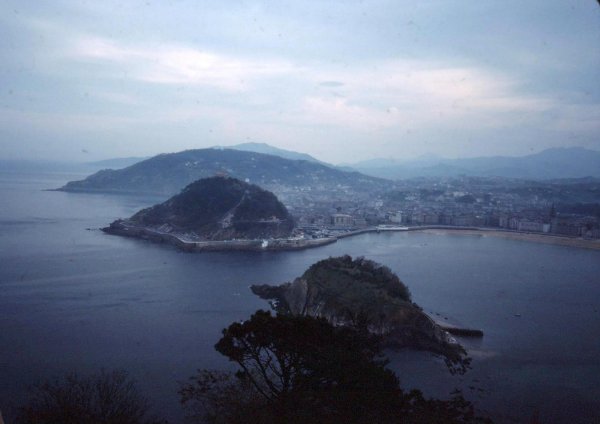 |
|
Bay of Biscay |
 
Philip's plan was to win control and proceed up the Channel to the Flemish shore, collect Parma's troops, assault the Essex coast and march on London. English Catholics would be urged to join the Spanish in banishing the "usurping, heretic, prostitute Queen."
 
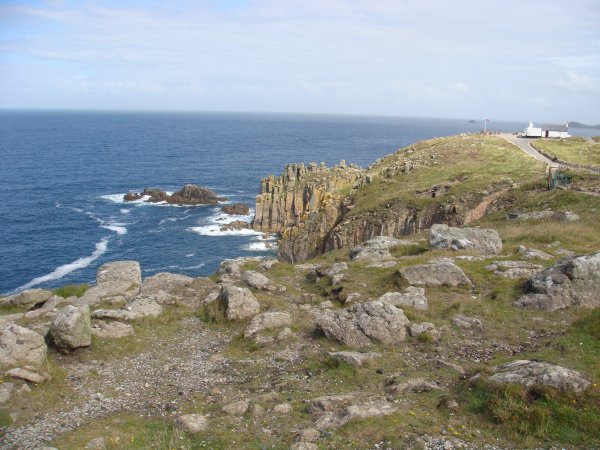 |
|
The horizon from Land's End once white with sails. |
 
 
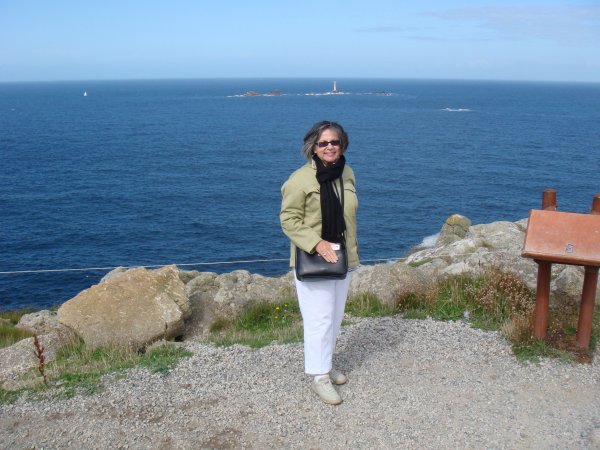 |
|
GERI |
 
 
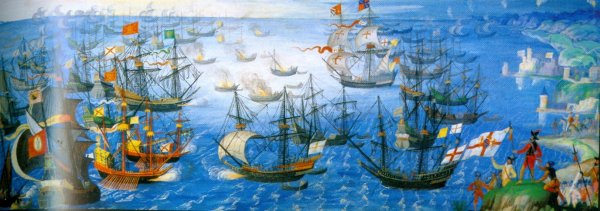 |
|
Armada Overall |
 
At dawn on 30 July the rising sun highlighted the lofty prows and tall poops of great galleons stretching in a line for seven miles. Forming a colossal crescent, they moved menacingly onward, their sails billowing in the breeze as they ploughed the waters of the Channel.
 
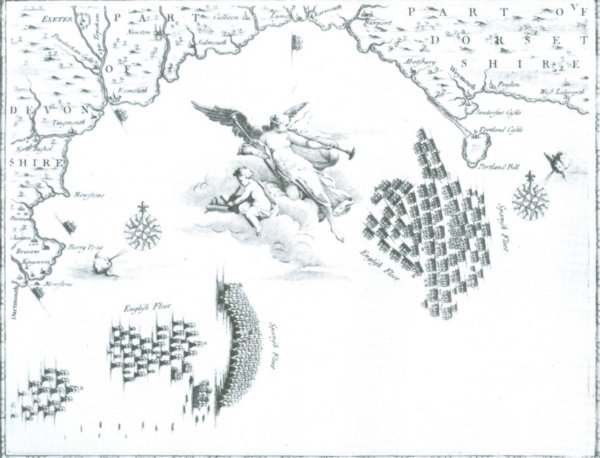 |
|
Crescent formation of Spanish fleet. |
 
 
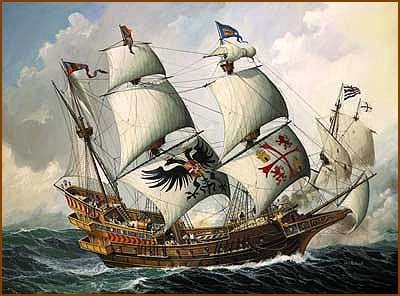 |
|
Spanish Galleon |
 
 
 
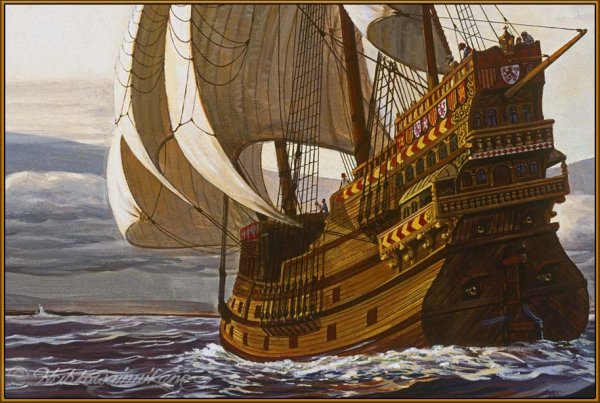 |
|
Spanish Galleon |
 
To signal the sight of Armada, alerts were conveyed by lighting of a string of beacons along the coast from Devon to the Scottish border. They burned brightly to summon sailors for the awesome Armada was spotted off the Lizard on 29 July, its flaunting flags flying high.
 
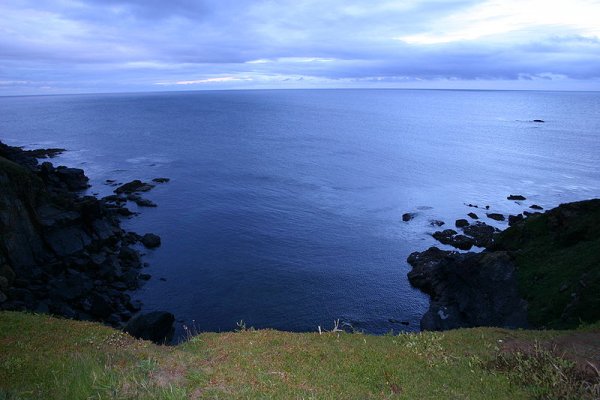 |
|
Lizard Point . |
 
When English soil was sighted at Lizard Point, a great banner that Philip had designed was run up and unfurled from the mast. It contained the Royal Arms of Spain supported by a crucified Christ on one side and the Virgin Mary on the other. It bore the motto,
Exsurge Deus et Vindica Causam Tuam
Arise O God and Vindicate Thy Cause.
Elizabeth replied to that plea with her own prayer..
"O let thine enemies know that thou hast received England."
The English squadrons awaited in Plymouth Sound. They were fewer in number and smaller in size, but lighter and more agile. The full complement of eighty-two ships prepared to greet and defeat the advancing foe. The best laid plans of men gang aft agley, for after confidently casting off to seek and sink Sidonia's fleet, adverse southwest winds in the Sound prevented the use of sails. With their boats becalmed, they sat in the Sound awaiting the arrival of the Armada.
 
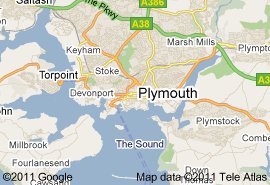 |
|
Plymouth Harbour |
 
 
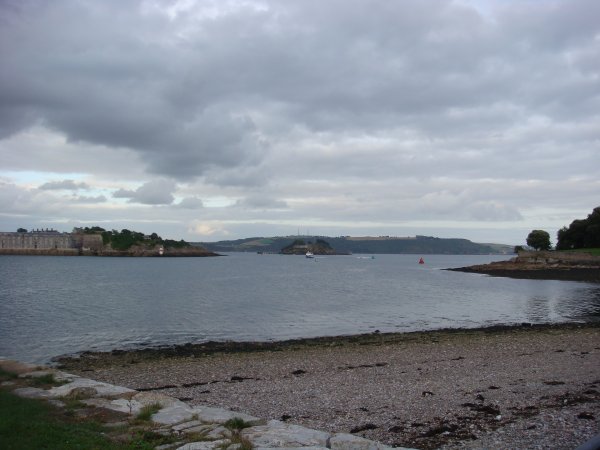 |
|
Plymouth Sound |
 
 
 
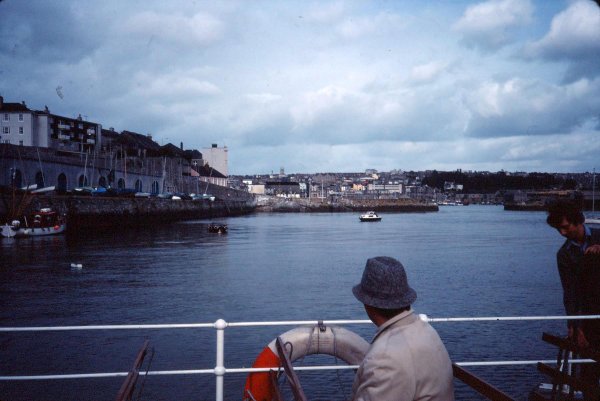 |
|
Plymouth Harbour |
 
 
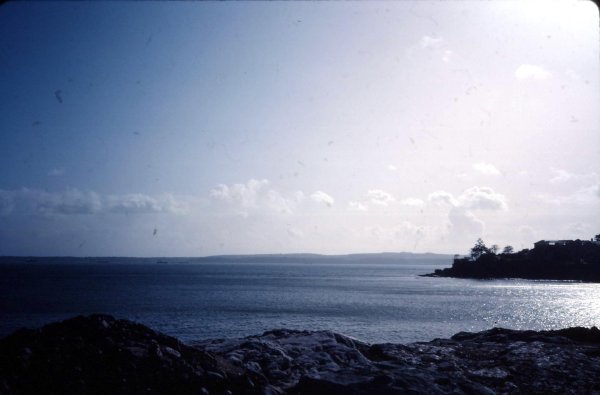 |
|
View of English Channel from Torquay South |
 
With no wind to waft them, they made do with muscle-power. The ships were "warped out of the harbour." Flyboats with men at oars, carried two or more anchors out as far as their cables would permit and dropped into the sea. Sailors aboard the galleons then heaved ho on the cables and pulled the ships up to the anchors. This dauntingly difficult procedure was repeated for each ship.
Fortunately for the English, a drifting fog masked much of their herculean hauling, but they were vulnerable nonetheless and provided the Spaniards with a twelve hour jump on them. Had Sidonia chosen to take advantage of this offered opportunity, the outcome might have been far different than it was. Despite pleas from his most capable captains, that they use the blessing to blast away, Sidonia stuck to his orders and proceeded up the Channel to unite his forces with those of the Duke of Parma.
When the fog finally lifted, Medina-Sidonia discovered that by precarious tacking, the English had got windward of him and had the weather gauge. The Spanish expected them to close, so they could grapple, board, batter and beat the smaller crews, but they waited in vain. Instead, for the most of next eight days, the English light craft with their low lines and narrower beams buzzed about the galleons, firing broadsides then flitting past. The Spanish used cannons to soften up the enemy prior to boarding, but with the advantage of the wind, the English had no intention of letting the enemy get close enough to board.
 
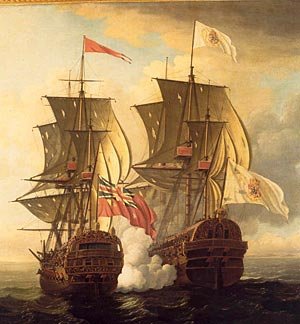 |
|
Broadsides Exchanged |
 
Then the wind sank and both fleets were becalmed for a time off Portland Bill near Weymouth. Drake in the Revenge followed by Howard in the Arc Royal, sailed in upon the Spanish, who according to Howard's report, "were forced to give way and flocked together like sheep."
 
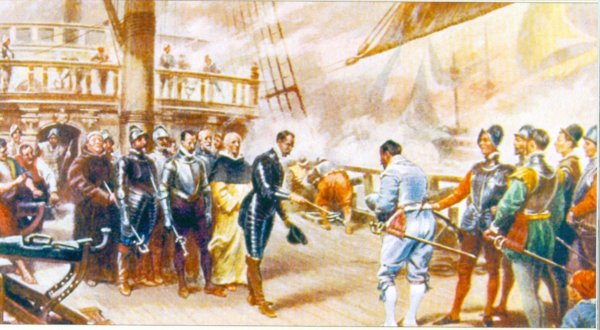 |
|
Drake aboard the Revenge |
 
 
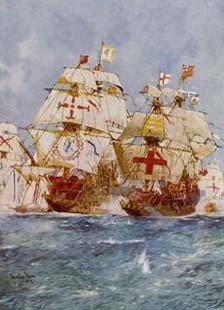 |
|
Lord Howard in Ark Royal versus the Duke of Medina Sidonia in San Martin |
 
 
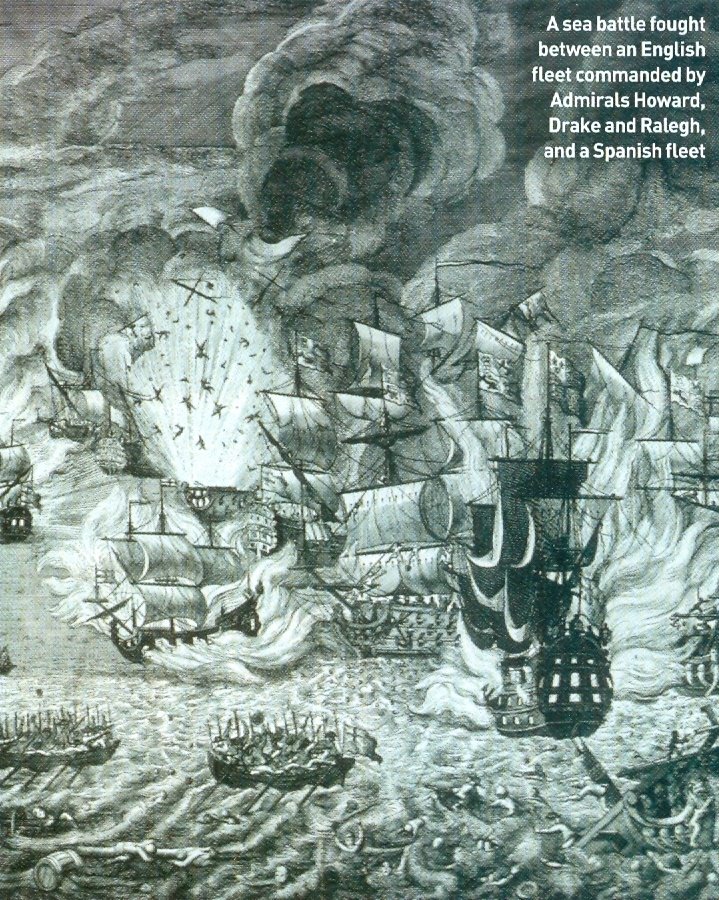 |
|
Sea Battle involving Howard and Drake versus Spanish Galleons. |
 
Because it looked as though the Spanish intended to seize the Isle of Wight as a base, another confrontation occurred off the island. Sidonia summoned Parma, but his ports were blocked by Dutch ships.
 
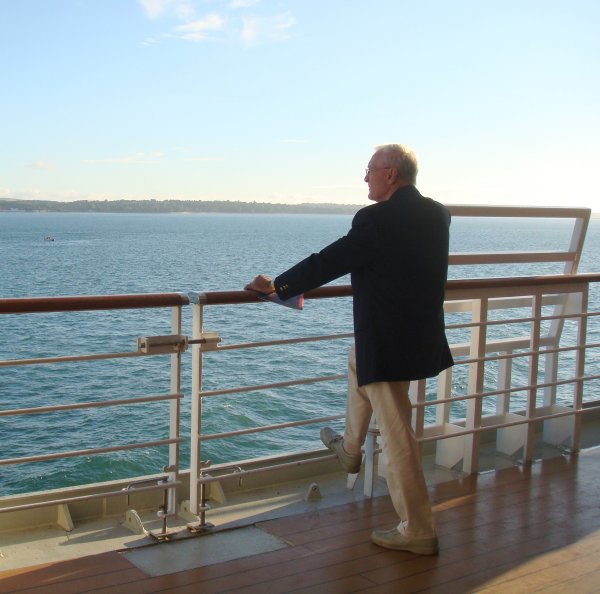 |
|
The Isle of Wight in the distance. |
 
Howard led this attack and in his flagship, Arc Royal, he sailed into the midst of the Armada. With bounteous broadsides he raked the decks of the galleons. The accuracy of the fire filled the Spanish with awe and anguish and finally broke their morale. Medina-Sidonia's report said it all.
"The enemy pursue us night and day, but will not grapple. There is no remedy for they are swift and we are slow."
 
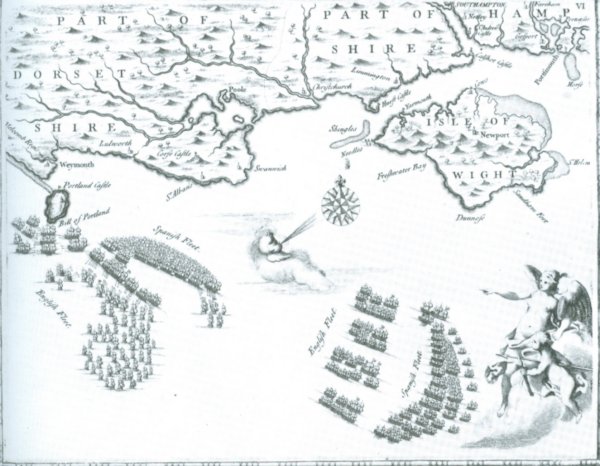 |
|
Action off Isle of Wight |
 
Howard suffered few losses and his report on the raid was succinct.
"Of nine of the clock, we gave them fight, which continued till one."
 
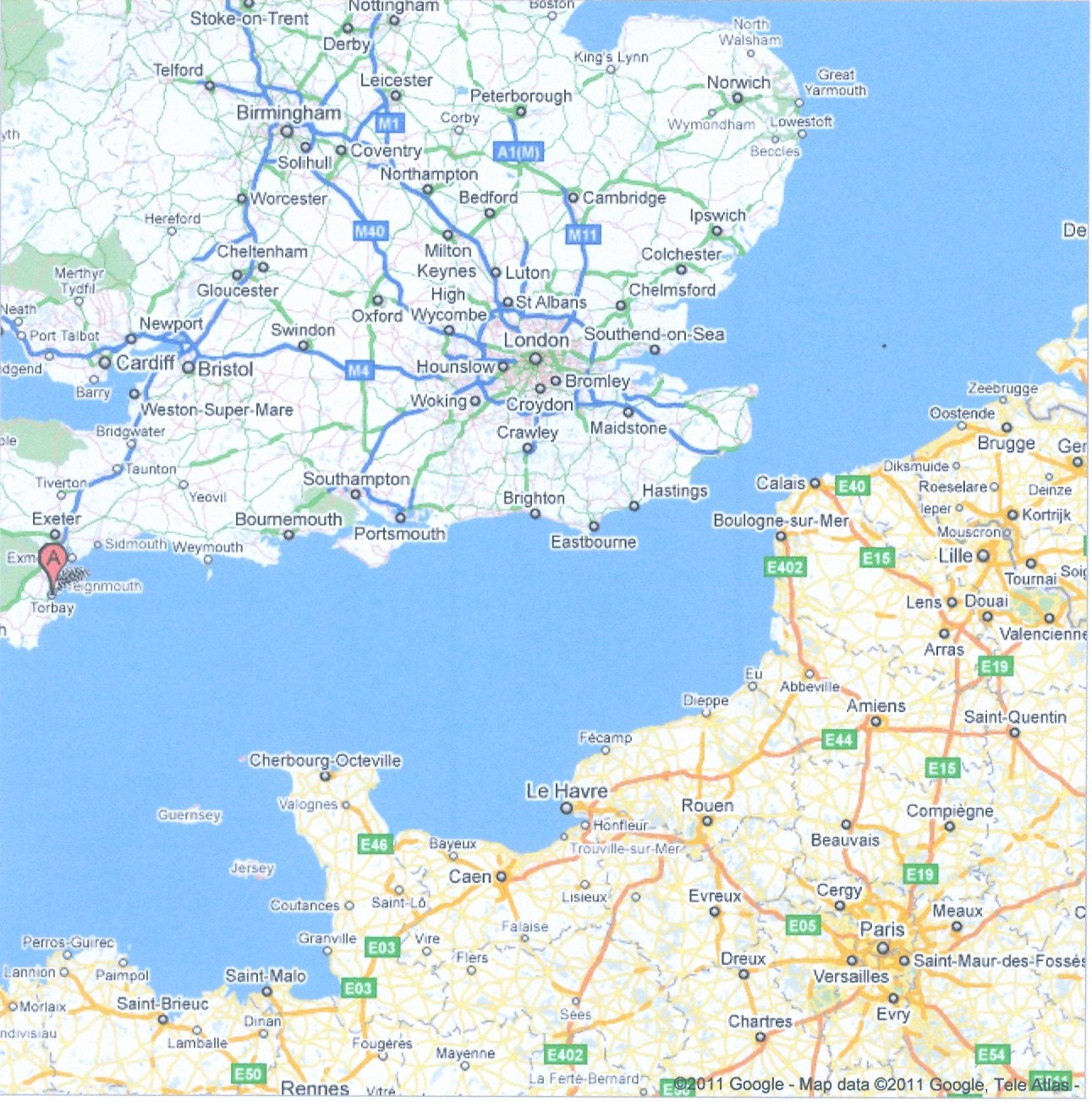 |
|
English Channel |
 
 
 |
|
|
 
 
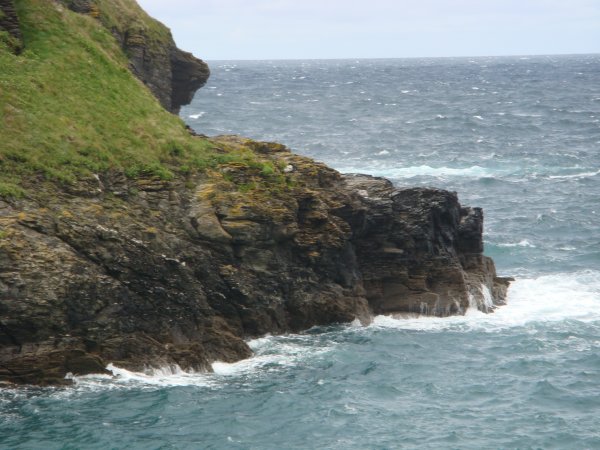 |
|
The Channel off Cornwall's wild coast. |
 
The Enterprise of England failed near here not because of any English effort, but because the coordination of Sidonia and Parma's forces never happened. The Duke informed his Spanish ally that the barges needed to ferry his troops to England were not available. Howard later logged: "We have so daily pursued them at heels, that they never had leisure to stop any place aloang our English coast."
With no suitable harbour available, the Spanish found themselves exposed at Calais Roads. A subsequent Spanish report described the pause at this place as, "the beginning of calamity." Medina Sidonia made a fatal mistake by anchoring close to the shore in tight formation, a perfect place for the English to employ a terrifying tactic.
The Spanish account continued. "The English hatched a plot. During the night they sent in some ships which had been set on fire. The alarm was raised. Men began to think they were like the terror-ships laden with gunpowder which had been encountered at Antwerp. The Duke, hasty and inexperienced, dashed out to the open sea to fight his adversary. "
This is what happened. At a council of captains on board Howard's flagship, Arc Royal, they decided to light up the night using fireships. After darkness had fallen, Drake set fire to eight small, dispensible boats loaded with explosives, thereby making what Winston Churchill called, "the torpedoes of the time." Drake placed the ships where the wind would waft them into the midst of the milling Spanish galleons. Anticipating the technique that had been used through the centuries, the Spaniards had brought along grapnels, barbed anchors with which to hook and haul the burning hulks off course.
Dozing on the decks, the Spanish crews were suddenly awakened by the flashes of fire. Having experienced this hideous happening before, they feared a horrible fate awaited from the "hellburners."
 
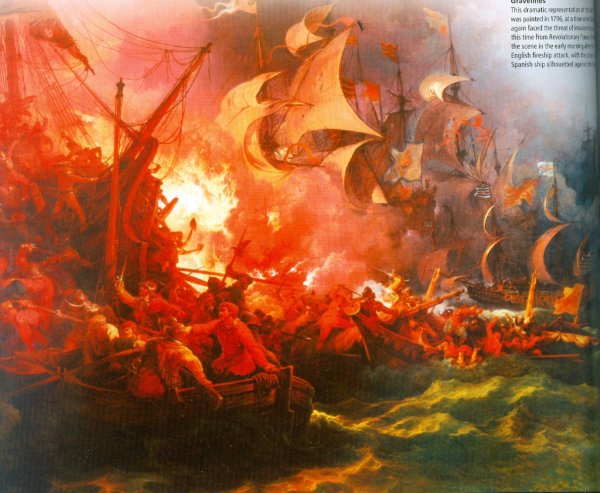 |
|
Fire! Flee! |
 
 
A series of explosions sent flaming debris sky high, dropping and drifting among the galleons. Anchored and anxious to be free to flee the flaming debris falling about them, some of the captains ordered their cables cut and fled before the wind. They lamented the loss weeks later, when without anchors, they were dashed apart in the rocky, turbulent waters off the Scottish and Irish coastlines.
 
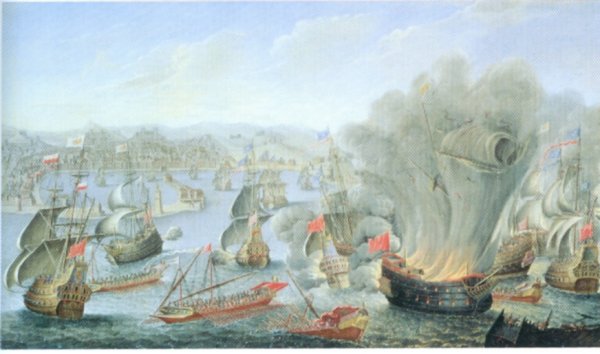 |
|
Fire Ships floated amidst the Armadaat Calais Roads |
 
While none of the vessels was burned, the fireships broke their formation and they "scattered in a thousand directions," causing numerous collisions. They sailed eastwards to Gravelines where the ships were driven northwards and pressed towards dangerous shoals by an onshore wind. Till then the English had not properly engaged the Armada. The wind changed and Drake's squadron sailed into the attack, as Sidonia valiantly marshalled his ships into a defensive formation. Fighting commenced and the cannon fire according to one observer was, "the greatest that was even seen or imagined."
 
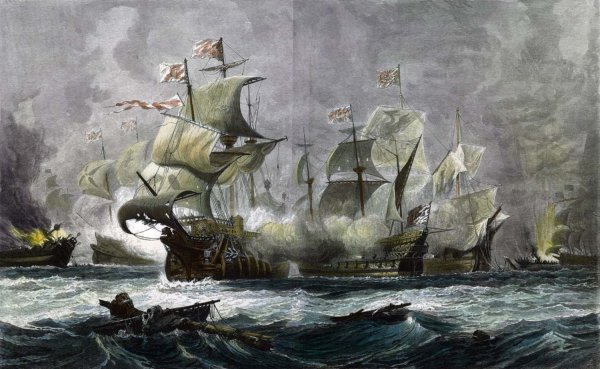 |
|
Vanguard engages two Spanish galleons |
 
 
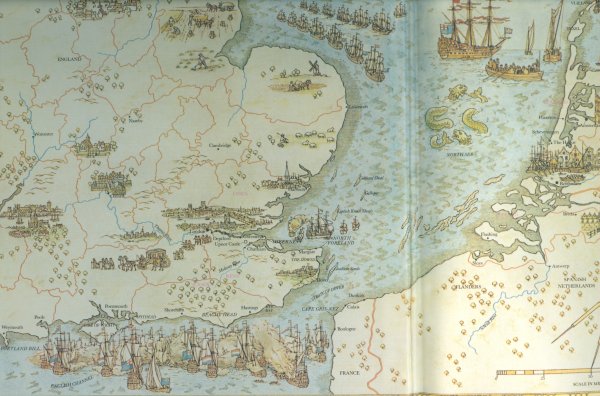 |
|
Scene of the Spanish Shellacking |
 
 
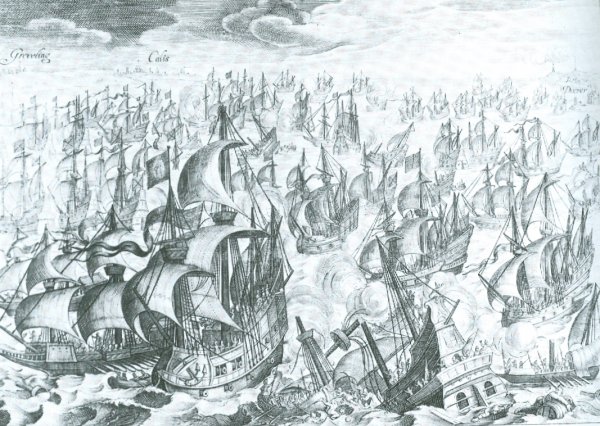 |
|
Battle of Gravelines 27-29 1588 |
 
 
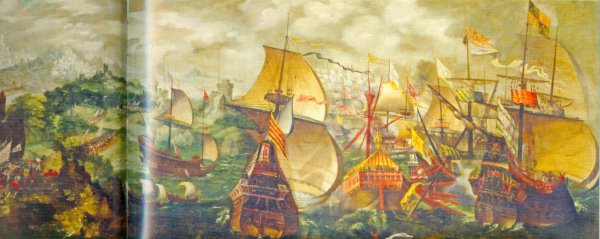 |
|
Freebooters fighting the Invincible Armada |
 
The long and desperate fight raged for eight hours, the results varying depending on which historian's account one reads.
Winston Churchill opted for the official report sent to the English government."Howard in fight spoiled a great number of the Spaniards, sank three and drove four or five on the banks. Their force is wonderful, great and strong, yet we pluck their feathers by little and little." Winston heralded his homeland's supremacy and stated that had the English not exhausted their ammunition, hardly a Spanish ship would have escaped destruction
This contrary account of the conflict challenged the traditional English version of events and criticized their efforts.
It is claimed the English failed to press their advantage. Sir Francis Drake's squadron led the attack, but the undisciplined Drake himself quickly slipped away from the fighting, presumably in search of prizes, drawing charges of 'cowardice or knavery' from fellow-commanders. Drake found what he was seeking in the damaged, Nuestra Senora del Rosario, which he snapped up as his personal prize. The English fleet continued to hold off by using the favourable wind, which had been theirs throughout almost the entire campaign. This was much to the madness of the Spaniards, who would have been able to make use of their superior manpower had the English tried to board their vessels. Although overall the Armada had abundant stocks of shot, most of the front-line Spanish ships ran out of heavy ammunition before the English closed the range. As a result the English suffered almost no damage at Gravelines and the Spanish relatively little.
Another record indicated that the English broke off the fight, probably because of worsening weather and lack of ammunition. The English commander thought he had "plucked its feathers," and believed the battered Spanish were facing a fearsome catastrophe from the rising gale driving them inexorably towards the shoals. The wind veered "as if by a miracle," and the vessels, essentially intact and effectively undefeated, scotched but not killed, bloodied but unbowed, were blown into the North Sea. They were harried on the high seas by the English, who followed them as far as the Firth of Forth. Not once did they turn upon the small pursuing, silent ships that followed them up the North Sea. Lacking food and ammunition, the English finally abandoned the chase and returned to port. The battles had cost them sixty men and not one ship.
One more version verified their victory and left no doubt about how it came out. The full English fleet poured fire into the wooden hulls, many of which were three feet thick. By a combination of superior seamanship and gunnery, they sank a fifth of the enemy fleet. Blood flowed freely and by the end of the day, four thousand Spaniards were dead and four thousand more were wounded. The surviving vessels had difficulty staying afloat. Bombarded and relentlessly battered, the Spanish sought surcease from Drake's dauntless sea captains and their butchering crews and were blown into the North Sea.
Take your choice of the histories hazarded.
 
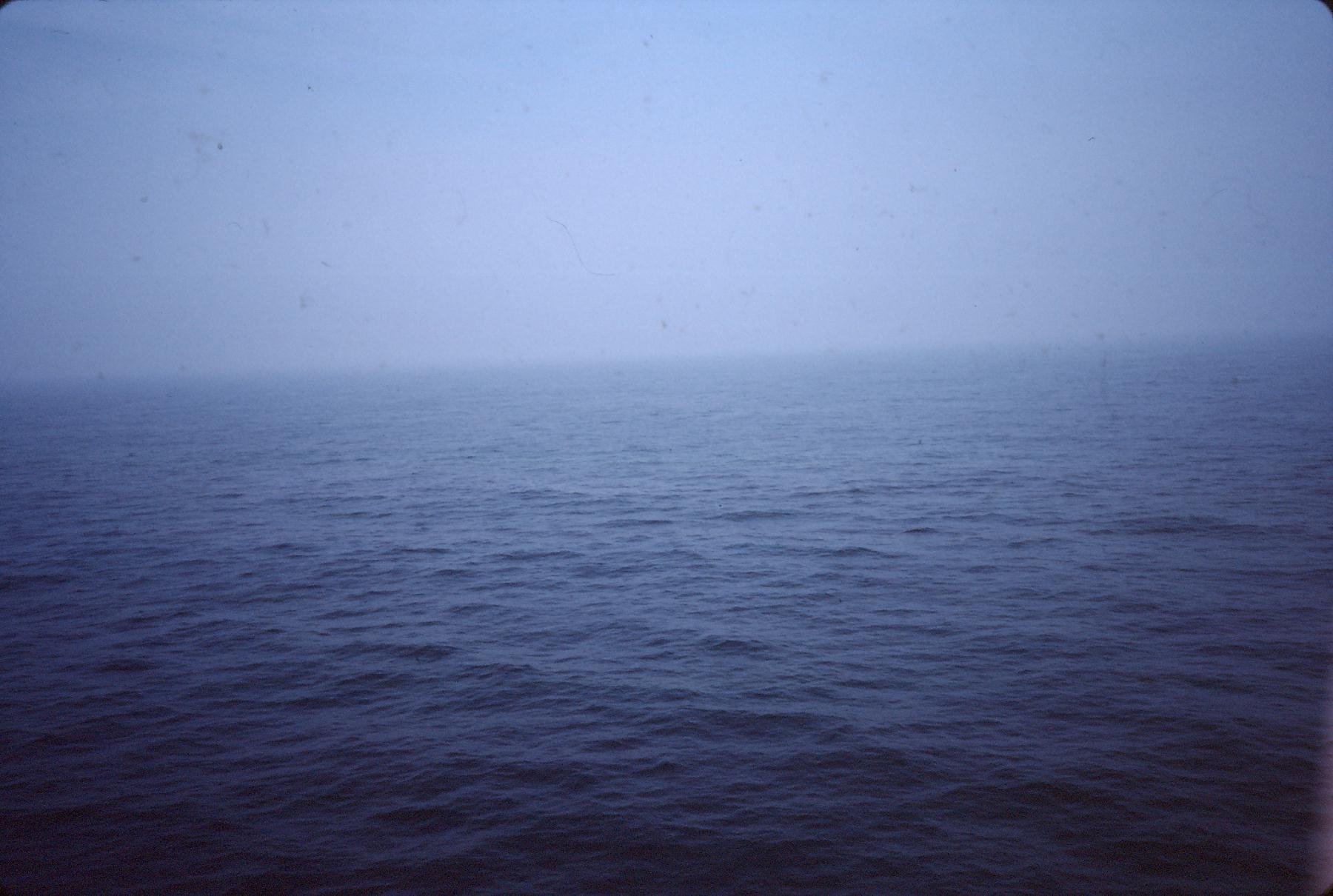 |
|
North Sea |
 
 
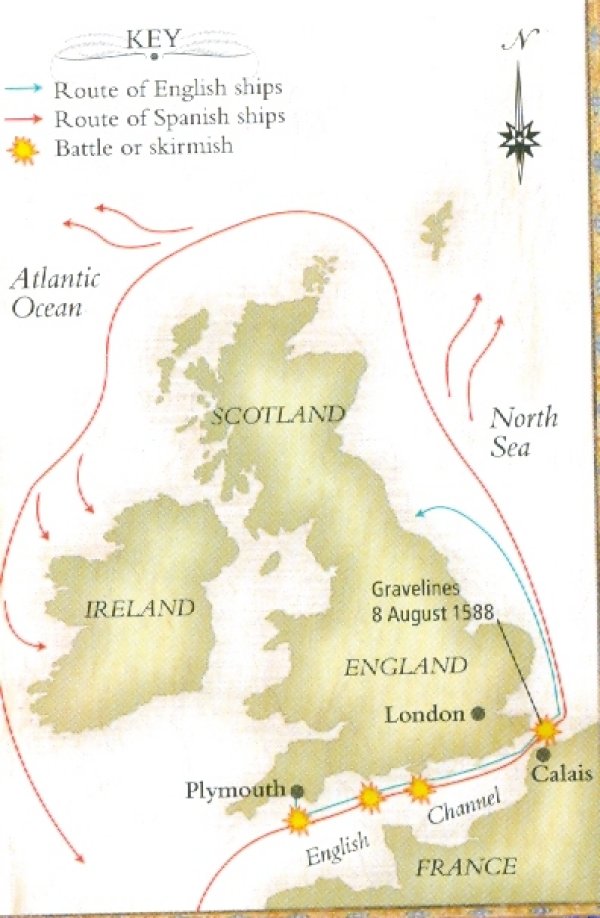 |
|
Conflicts in the Channel and Routes of the rest of the routed Armada taking the high road home. |
 
The official Spanish account recorded, "From this desperate peril we were saved by God's mercy." Early on all was still well, till the Armada had rounded Scotland, headed for home. Then freak storms turned their voyage into a nautical nightmare. The wind veered viciously and dispersed the ships in all directions. Between 11 and 24 September, the fleeing flotilla endured some of the worst weather ever recorded in the region. It culminated in a veritable hurricane, that seemed, reported one eye witness, "that it would overwhelm and destroy the whole world." An English squadron commander, Sir Martin Frobisher, agreed stating, "Let me be hailed to the stake before I come abroad again.' At least 21 ships came to grief on Scottish and Irish shores.
 
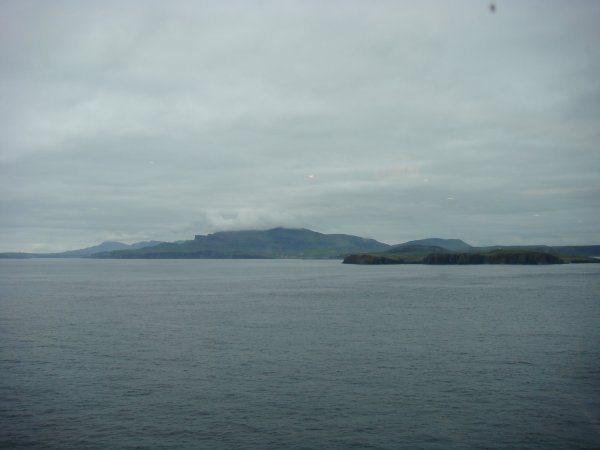 |
|
Here along the north coast of Scotland, only remnants remained to remind one of the fate of fabulous Spanish Armada. |
 
Ships disappeared without a trace in the ocean. Others were smashed by the angry sea, vestiges of the vessels and many dead reached the Irish coast, eleven hundred bodies being carried to Sligo's shore alone.
 
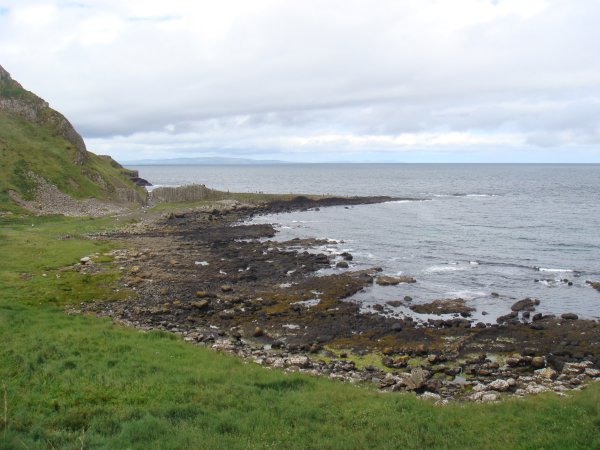 |
|
Rugged Irish Coastline |
 
 
 
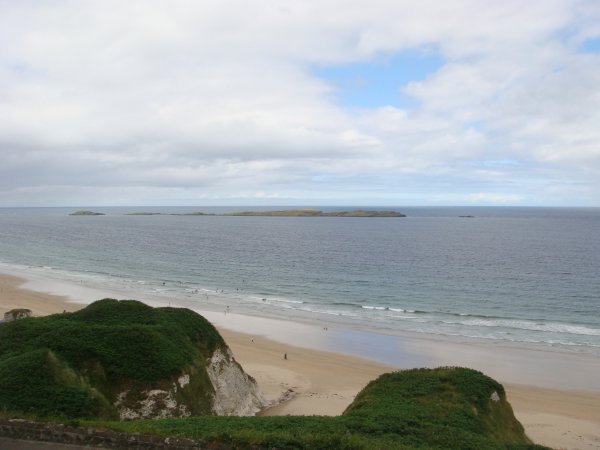 |
|
Irish Coast |
 
Seeking succor, food and a friendly face, the frantic Spaniards found instead maniacal men, savage, uncivilized denizens of these daunting deeps, who feared these foreign folk with a strange tongue and weird clothes.
 
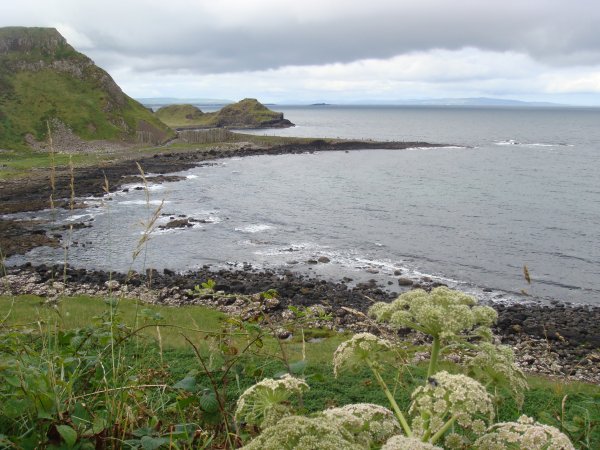 |
|
Giant's Causeway, Ireland |
 
La Girona was shipwrecked here in 1588. Of the 1300 sailors & noblemen on board, only 5 survived. The wreck was discovered in 1968/9.
 
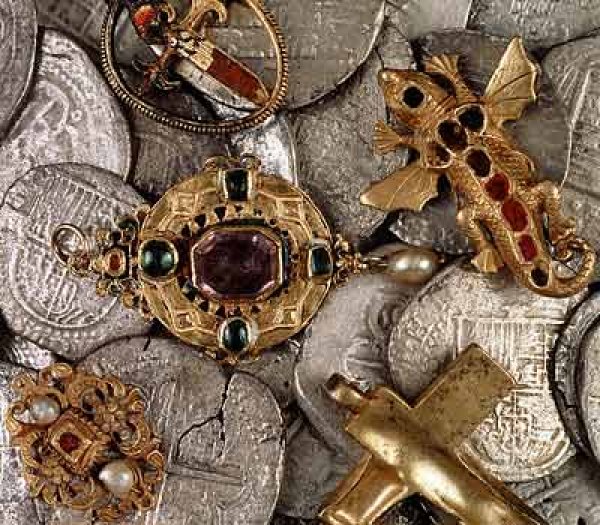 |
|
Girona Treasures recovered |
 
Over the centuries, one other wrecked Spanish ship received more that its fair share of attention and with good reason. Known as the Tobermory Galleon it was rumorued to be carrying a treasure of some $45 million. Numerous diving expeditions featured not the fortune, but the skull of a cabin boy, which is considered to carry a curse. Receent research disclosed the vessel was the San Juan de Sicilia minus any money.
The only safe haven was home and of the 130 vessels that sailed forth to seize and save England from "that Protestant whore," 67 returned. Nature not England was the greater enemy, its wind and waves wasting the galleons, ravaging the bulk of the Spanish boats. The English never really defeated the Armada. They sank only one vessel in combat and captured another disabled by a collision. Two were grounded as a result of the fireship attack.
In the absence of an outright English victory, Elizabeth's artists depicted the Armada's dispersal by the acts of God. If claims were made about defeat, they always had to be with the assistance of wind, waves and luck. The abysmal weather was such that Medina Sidonia declared he would rather lose his head than return to sea. When Philip learned of the disaster, he shut himself up in his Escorial cell, where no one dared disturb his isolation. When he breathed his last in the vast El Escorial, his cherished goal was nothing more than an impossible dream.
The loss he lamented changed life in Spain and throughout all of Europe. Naval tactics converted to cannonading from grappling and boarding, The loss of Spain's fleet and military might permitted the Dutch to win their independence and opened North America to settlement by English, Dutch and French colonies. Protestantism was preserved and Catholicism waned in England.
If the Armada had prevailed, historians can only hazard what the future fate of England, Europe and indeed, North America might have been.
PROPAGANDA PICTURES
The paintings of Philip and Elizabeth share propaganda devices.
 
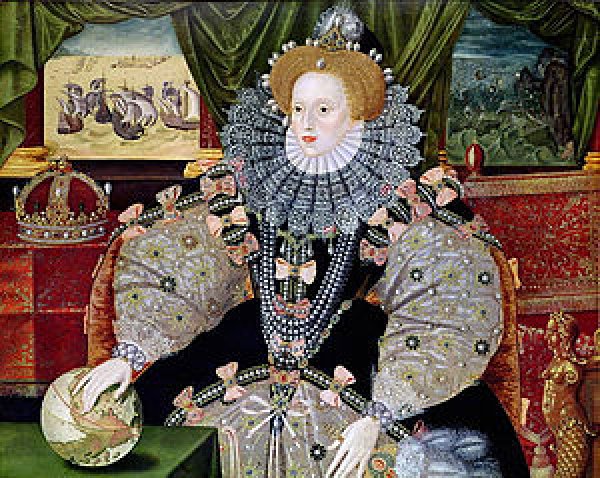 |
|
An Armada Portrait of Elizabeth I |
 
Elizabeth is depicted surrounded by allegories of power. An image of the Armada over her right shoulder is balanced by one of its defeat over her left. She stands alongside a 'crown imperial' and rests a hand on a globe, as well she might, for the English navy commenced its domination of the globe. Her hand on the world alluded also to the call by some of her courtiers to found an English empire overseas.
 
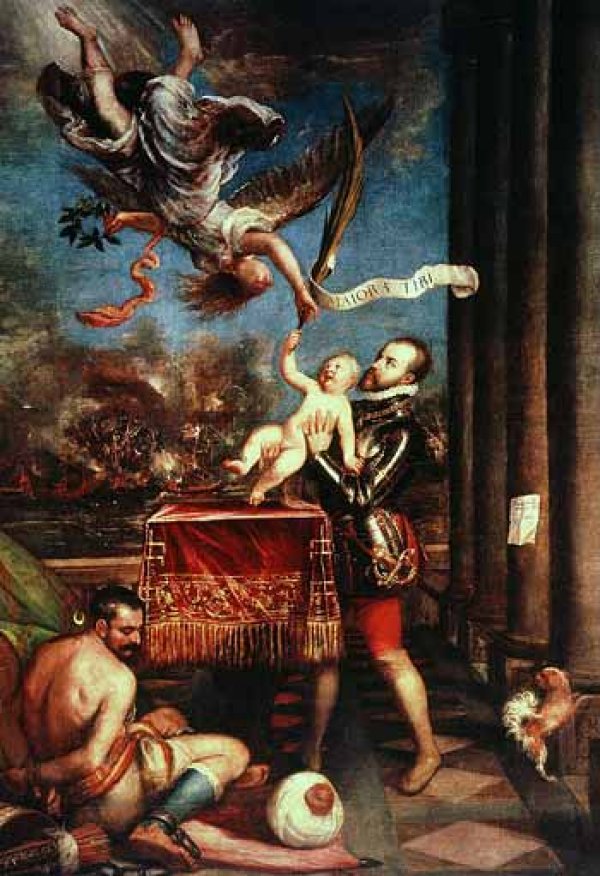 |
|
Philip on top of the world |
 
Philip's battle background is portrayed by the Turkish captive and the weaponry at Philip's feet. The painting focuses on Philip's promise of continuity, for he rejoices in the birth of a prince in contrast to Elizabeth, whose successor is uncertain, always auguring contentious times for the country. The background of Titian's painting of Philip, features the Battle of Lepanto of 7 October 1571, a decisive encounter when the Spaniards with their Italian allies captured or destroyed 250 Turkish ships.
Historical accounts of important events "may sometimes favour family in the telling." In other words, the teller's great tale is often built on bias. An example of this is the well-known tale of England's take on the Armada. Front and centre is the devil-may-care, Francis Drake, nonchalantly basking on the bowling green before reluctantly rousing himself to raid and rout the pesky Spanish and their flimsy flotilla.
Propaganda rapidly turned the Armada into a subject of myth. Both sides represented the fight as holy - a terrestrial arena of celestial conflict on which divine attention is focused and divine power concentrated. These versions have each nation's vessels succombing to the will of God.
The English commemorative medal reads simply:
Afflavit Deus et dissipati sunt
God blew and they were scattered.
The Spanish version of events is contained in this excerpt from a Spanish school textbook, Glorias Imperiales: Libro Escolar de Lecturas Historicas published in Madrid in 1940.
A terrible wind from the south-east was stirring the waves. The rain began in a flood. Lightning and thunderbolds lighted the thick darkness. The hurricane beat upon the galleons and played havoc with them, delighting in scattering them and sending them crashing into one another or against the coastal reefs, sweeping over them and sinking them. When dawn came, the fleet was broken and dispersed.. Heroism did not suffice against the attack of the English ships. The storm came on again and the damage was made greater still. The Duke ordered a retreat to save what remained of the vessels. But the way back was by North Scotland and Ireland and the squalls there delivered the final blow and wrought further havoc upon the fleet. The Invincible Armada of the Imperial Spanish Fleet was for the first time conquered. But not by men, nor by the squadrons it put out to fight. It was vanquished by the elements, against which valour and human daring are impotent, because it is God who rules the sea. Only against the hurricane and gales did we lose, because God wished it, the naval supremacy of the world."
English drama flourished during Elizabeth's reign, largely resulting from the words of William Shakespeare. When the Armada took place in 1588, he was 24. He wrote the The Tempest, his last and some think his finest play, in 1613 and died three years later. .
The Tempest
Miranda
 
 |
|
|
The play opens with a ship struggling against a tempest. its wild waters assailling them. Miranda's words, lamenting the loss of life resulting therefrom, might well serve for the nameless thousands, who lives were lost beneath the waves whipped up by the winds that spelled disaster for the Invincible Armada.
With those that I saw suffer! a brave vessel
(Who had no doubt some noble creature in her)
Dashed all to pieces! O, the cry did knock
Against my very heart! Poor souls, they perished!
 
With no enemy to fear, the island nation was full of spirit, energy and pride, fostered by the wonderful writing of Shakespeare, whose words spelled woe for any who dared daunt England.
Come the three corners of the world in arms,
And we shall shock them.
Nought shall make us rue
If England to itself do rest but true.
 
The creation of British maritime might marked a turning point in world power that can be traced to the victory over the Armada.
One painter, who emblazoned his effort with his own name, echoed the official line. Painted on a piece of ship's board and displayed in the parish church, the work represents the Armada's crescent formation as a dragon - a beast recognizable to everyone at the time as diabolic.
 
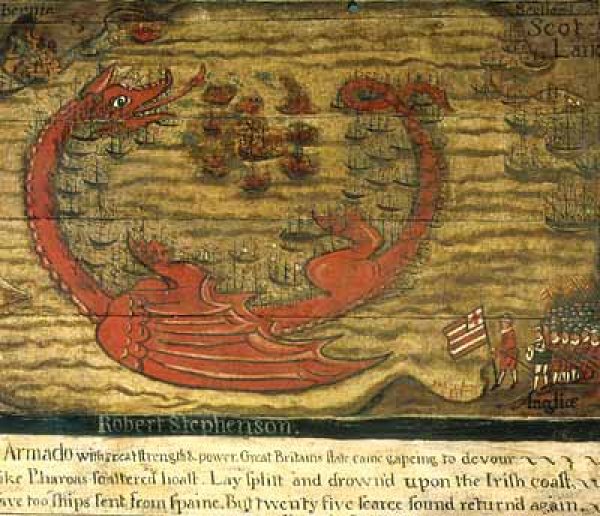 |
|
Allegory of Battle |
 
 
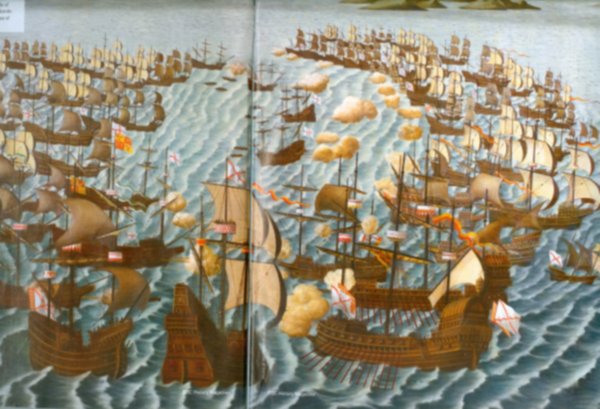 |
|
Tapestry depicting the Spanish Armada |
 
After 176 years, the House of Lords was recently reunited with a symbol of one of the nation's finest hours. The Armada Tapestries hung for centuries in the debating chamber, but perished in an 1834 fire. Fortunately, they were recorded as a set of engravings and artist Anthony Oakshett and his team have painted recreations. The painting shows the defeat of the Armada, driven back by bad weather and superior English manoeuvrability. Most famously, Francis Drake was able to inflict a crushing defeat on the Spanish at the battle of Gravelines, named after the small port in the Spanish Netherlands where it was fought.
[*]It is believed Mary, Queen of Scots, had the prayer book at her execution. A prayer book belonging to Mary, Queen of Scots, has been brought back to Scotland for what is thought to be the first time in more than 400 years. The Book of Hours has gone on display for a day at Loretto School in Musselburgh, East Lothian. It has been lent to the school by a college in Lancashire and will be reunited with an ornate crucifix on loan from the Abbotsford Trust. It is thought Mary carried both items to her execution in 1587. The Book of Hours, seen in several portraits of the Queen, is a velvet-covered prayer book decorated with the royal crest. The book and crucifix will form the centre-piece of a display of history pupils' course work on the life and times of Mary Stuart. The prayer book is thought to have been kept in England since the Queen was beheaded at Fotheringay Castle in 1587. Historians hope this one-day loan to Loretto School could lead to further, longer exhibitions so the wider Scottish public get the chance to see the historic artefact.
Afegeix-hi un comentari: